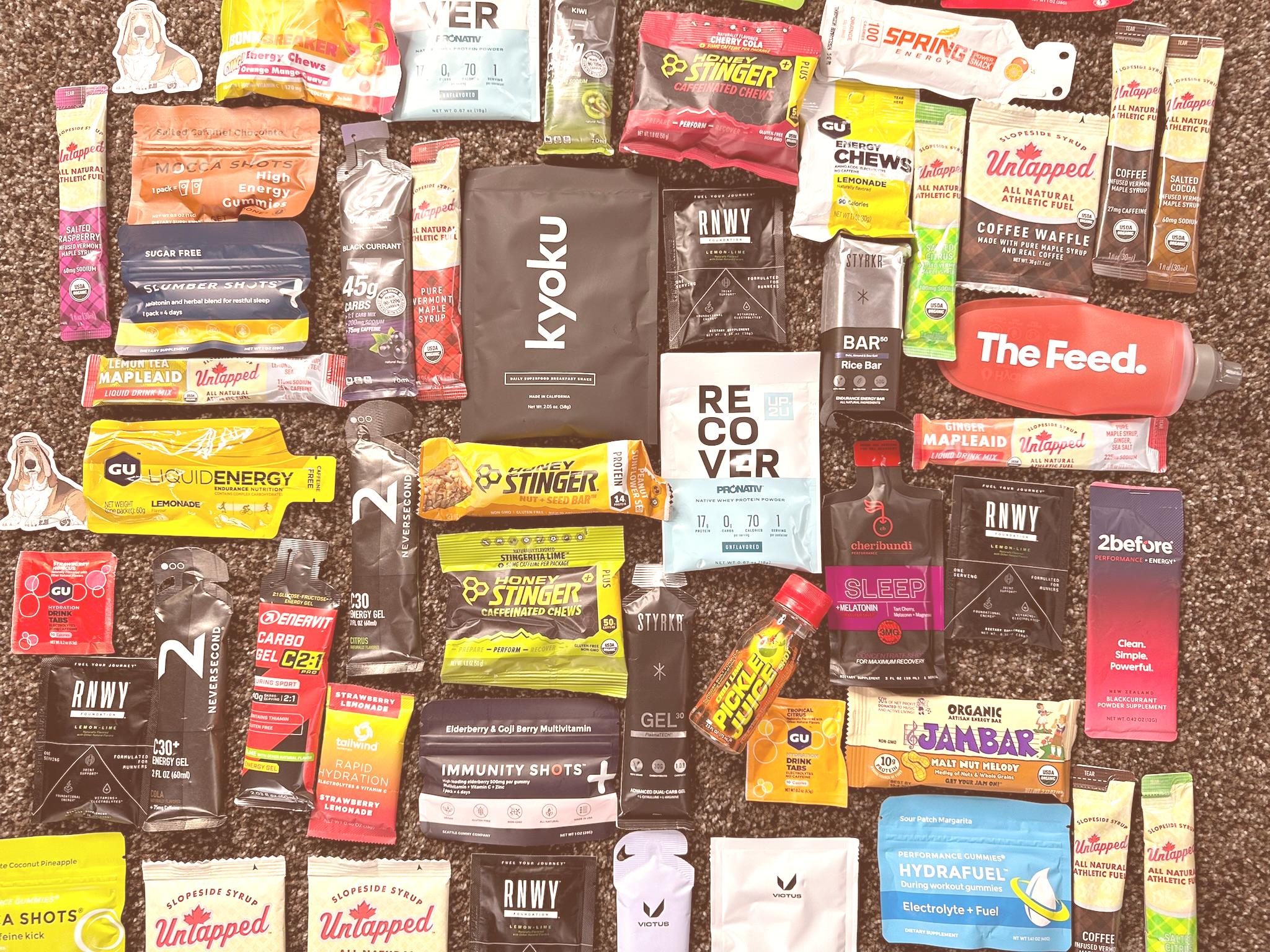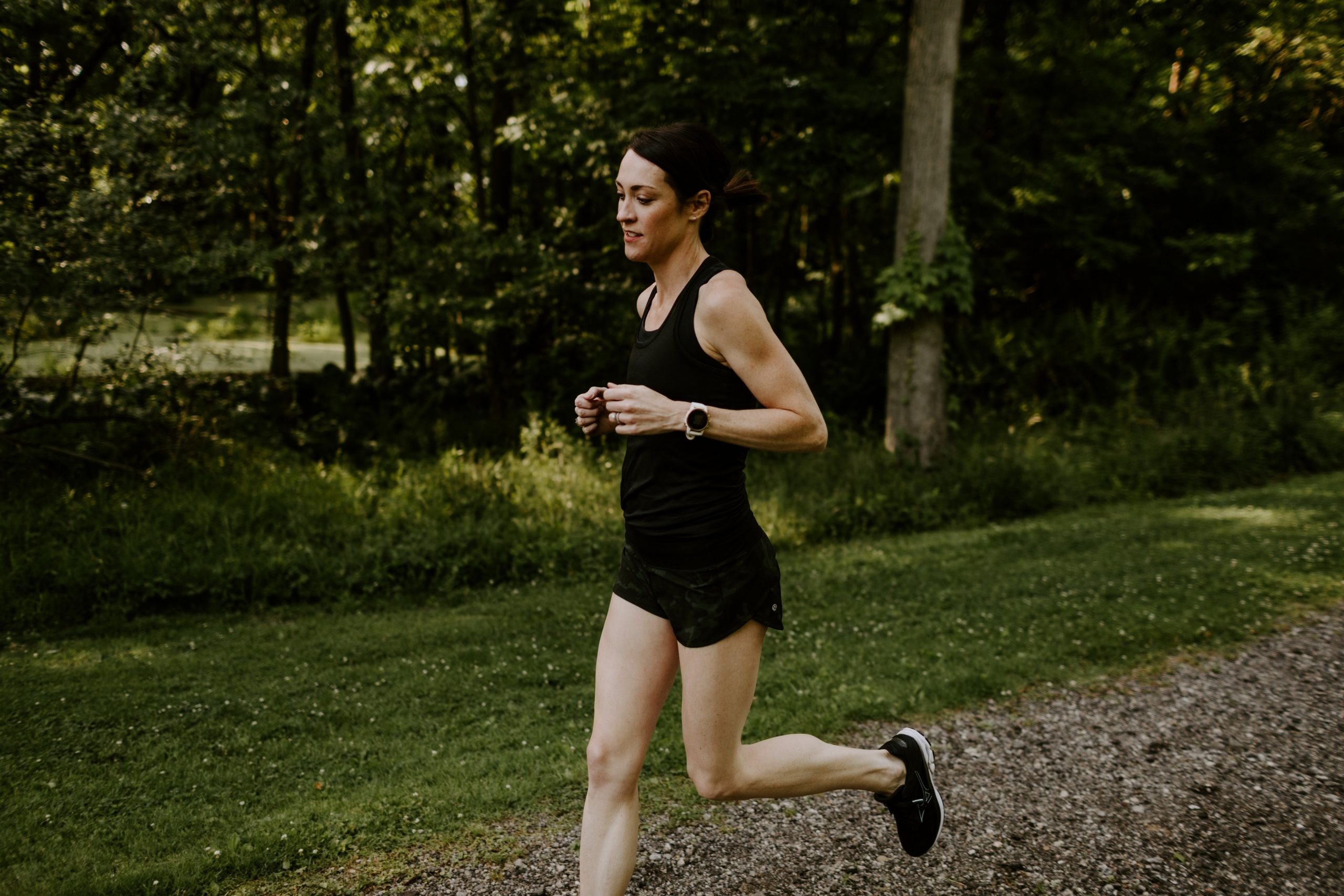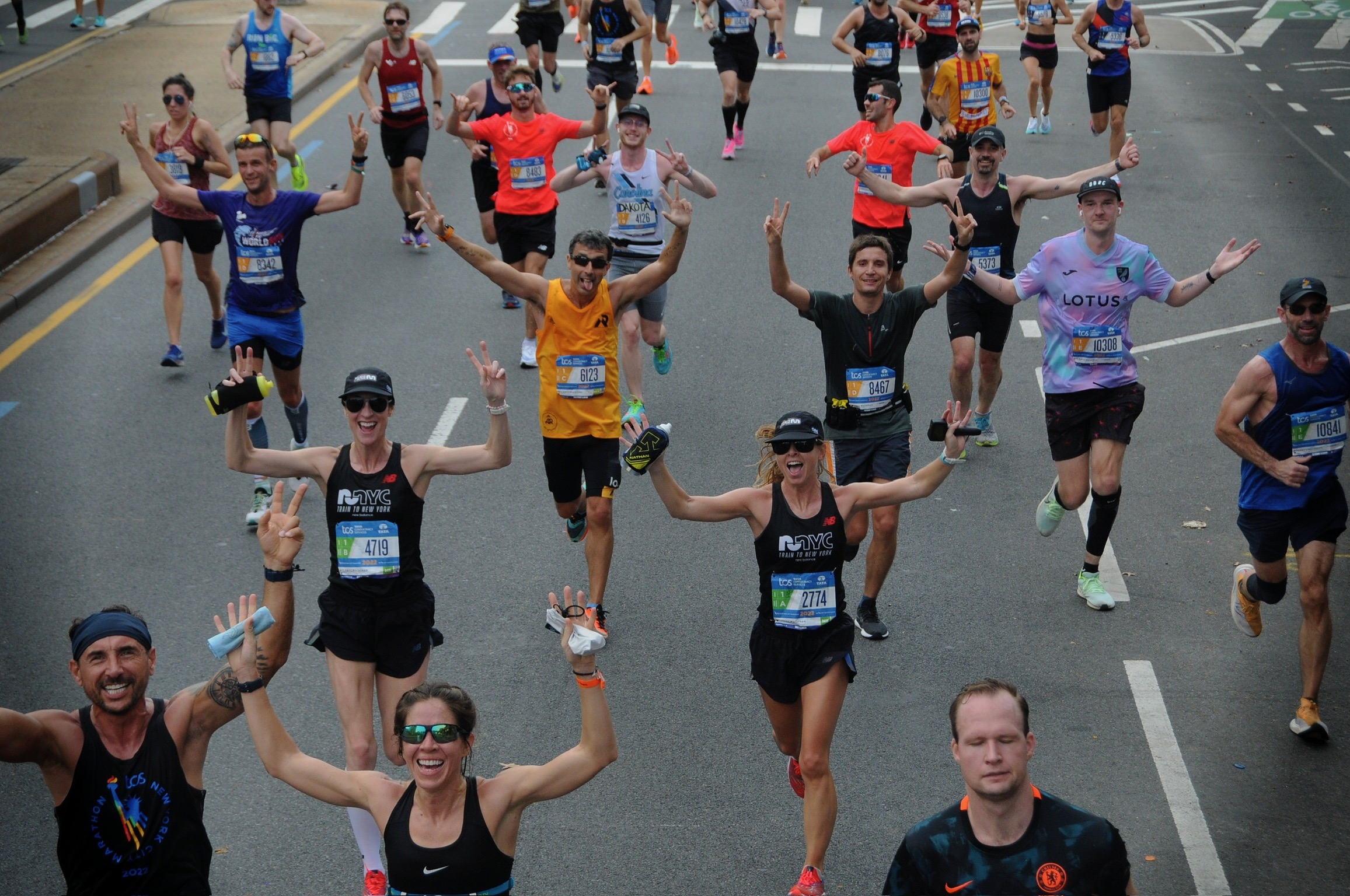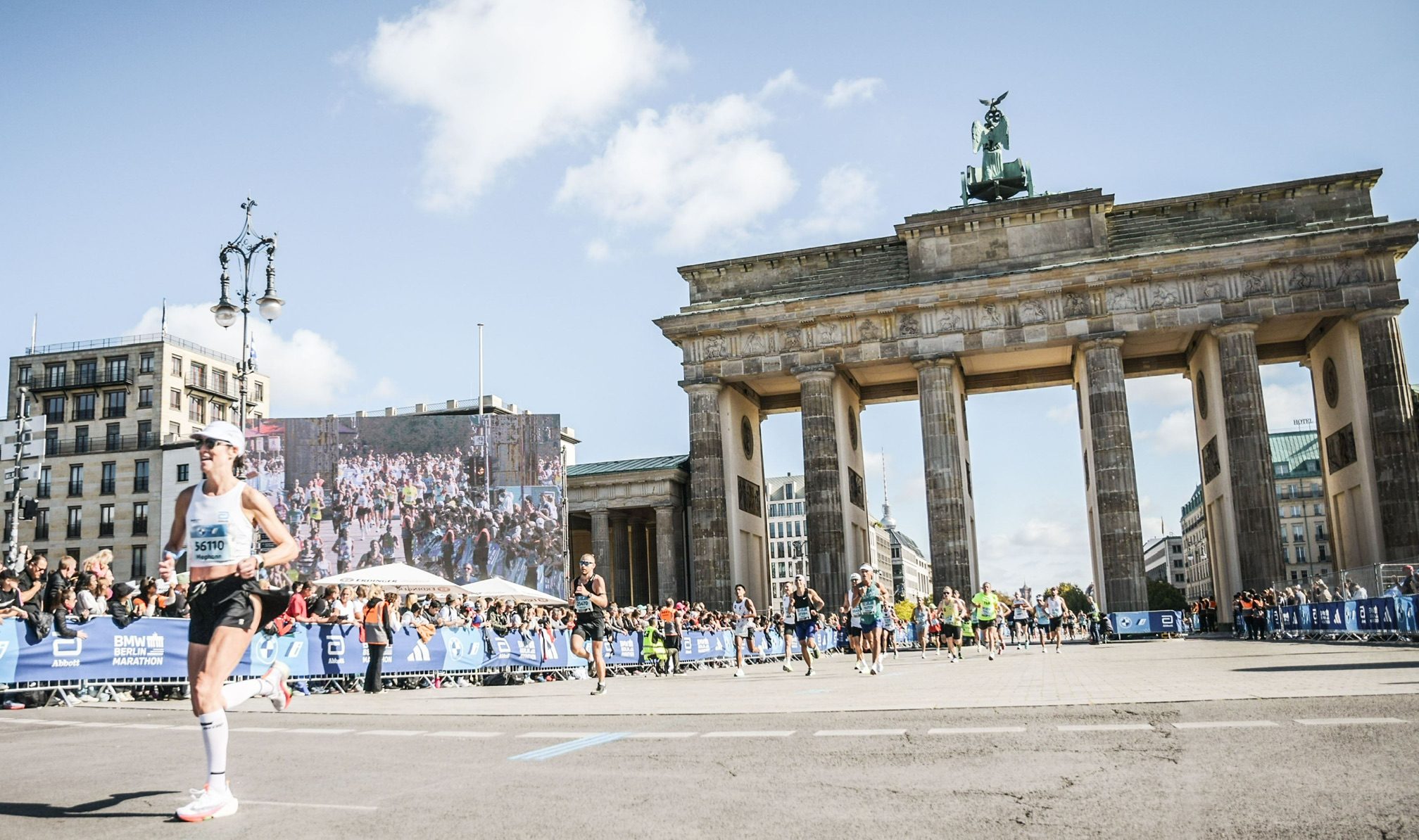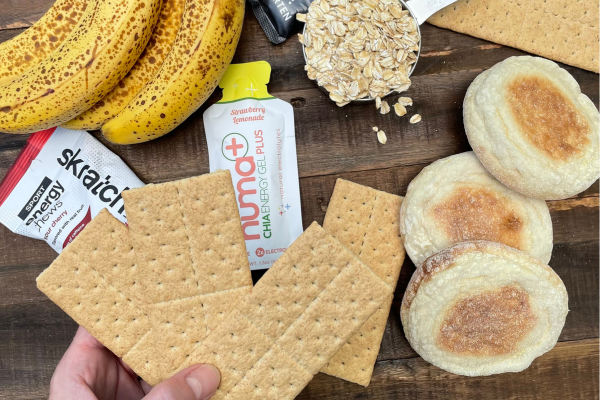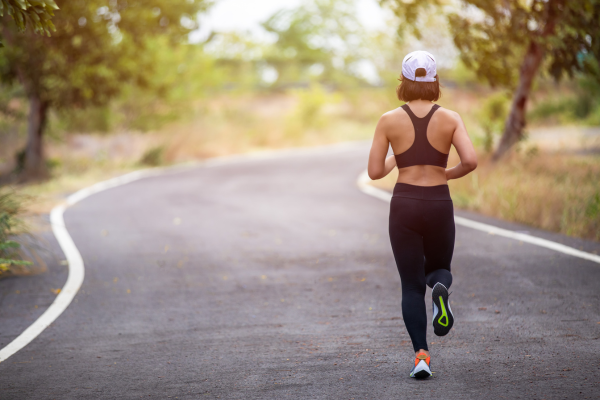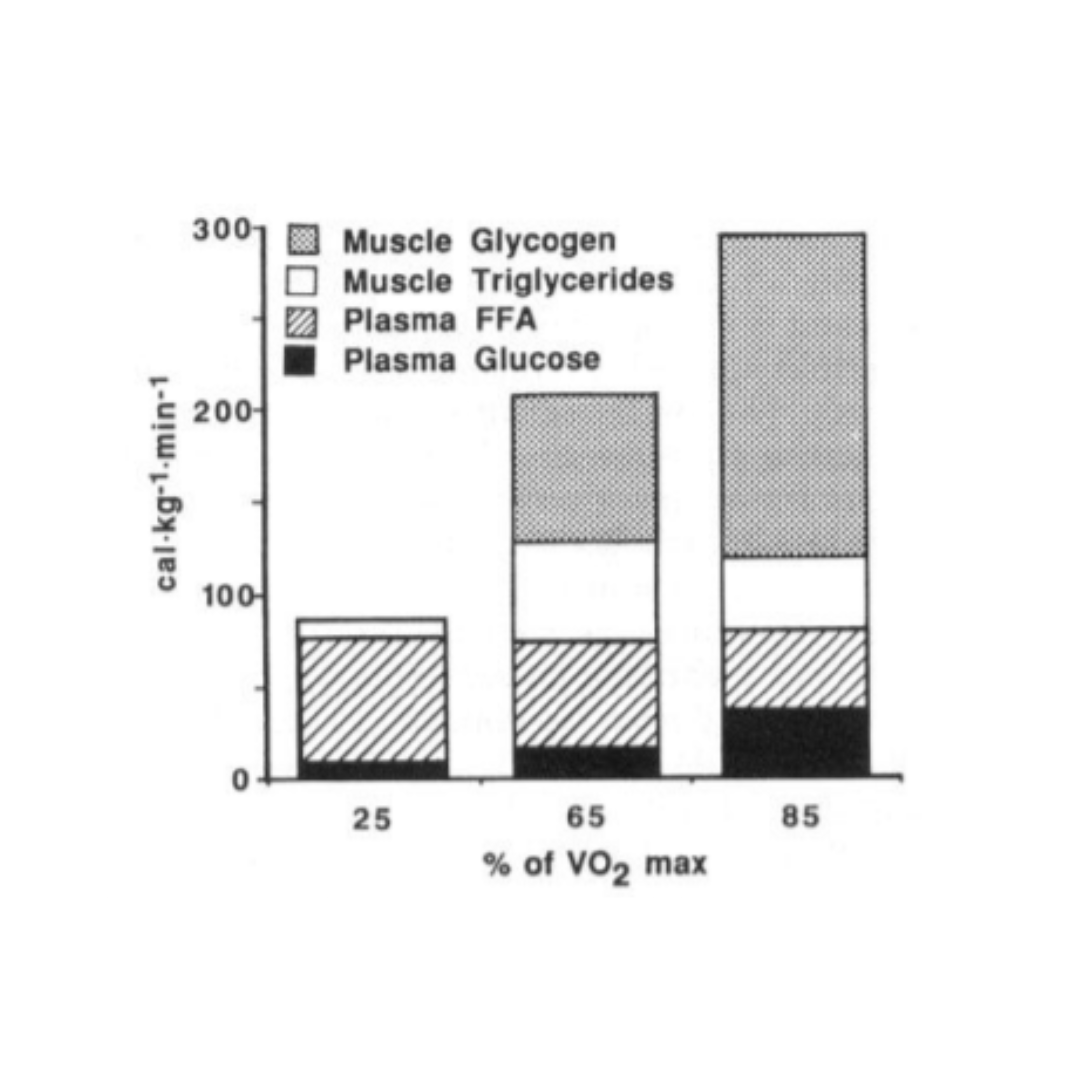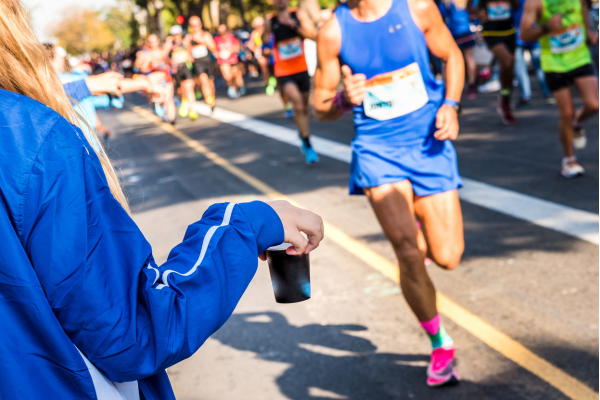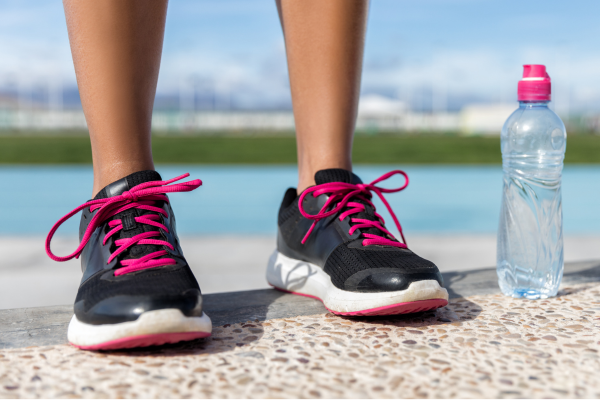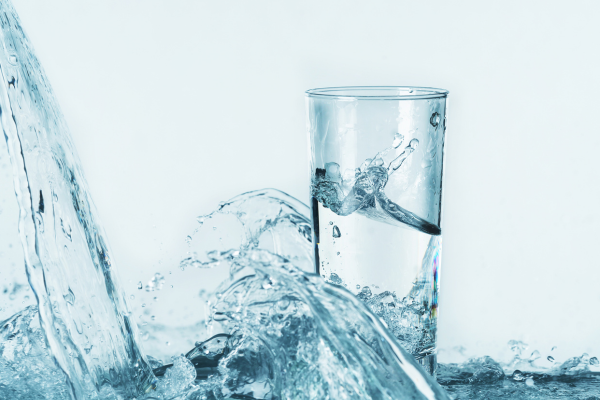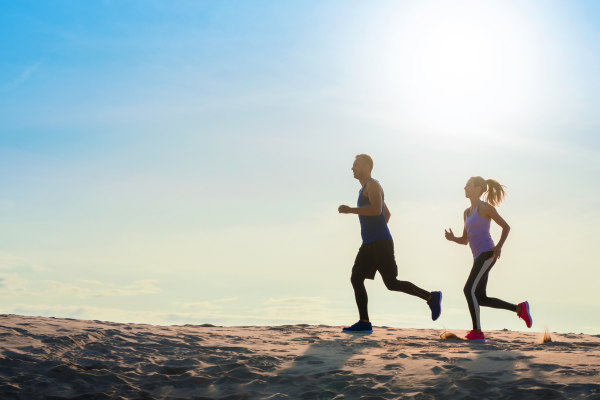The Latest in Sports Nutrition Products at The Running Event 2023
Every year, run specialty retailers, media, and brands come together at The Running Event (TRE) in Austin, Texas to show off their current & new products for the upcoming year. At it’s inception, this was the place for run shop owners to come and place orders for products to sell at their stores in the upcoming year.
I clearly don’t own a running store so what was a sports dietitian doing at TRE? Over the years, this event has evolved to include ‘media,’ which to the best of my understanding means running influencers. This is the category I landed in. My podcast counterparts, Believe in the Run, have been attending for years to cover current & future running shoes from all the brands. When I looked at the vendor list last year, I noticed it wasn’t just run shoes & apparel – there were also a ton of sports nutrition brands. So I made a mental note to add this to the calendar in 2023.
So here I was – feeling a lot like a goldfish in a shark tank for a hot second. But, as I walked through those doors into what can only be described as the largest race expo ever, on steriods, times a milion, I was a giddy little school girl bouncing around from sports nutrition booth to sports nutrition booth. It’s possible I consumed more sports nutrition in this 8 hour day than in any marathon yet.
Before TRE, I reached out to all of the nutrition brands on social media, made notes on who I wanted to stop and see, made those a priority, then bopped around to anything else that looked interesting. There were many sports nutrition companies who did not attend TRE, so this review is certainly not inclusive of all products. But, of the available brands, I can bucket my excitement into a few categories: different & new products, new flavors of our old favorites, and protein or energy bar options.
Note: I may have gotten free samples from these companies at TRE, but I am not receiving any financial kickback from this post. And the product information & reviews below are all my own thoughts and opinions.
Different or New Sports Nutrition Products
The first thing on my radar was finding new, or new to me, sports nutrition brands and products that fill a need or gap for runners nutrition.
First up, RNWY. A very new company that is creating a wellness drink to help keep runners healthy in the long haul.
What is it: A powdered drink mix that contains collagen + Vitamin C for joint & soft tissue health, B vitamins to support energy production, & electrolytes for hydration.
What Meghann likes about it: An easy, tasty way to consume your 10 gm collagen + Vitamin C pre-run. This product is the most palatable way to consume collagen yet.
Who may need it: If you are looking to prevent or help heal tendon, ligament, or joint damage – you may benefit from a collagen supplement. Collagen is best taken 45 – 60 minutes pre-run. This product makes it super easy to slug back your collagen in this time frame no matter when you are running.
Bonus: They will be getting their product third party tested in the new year.
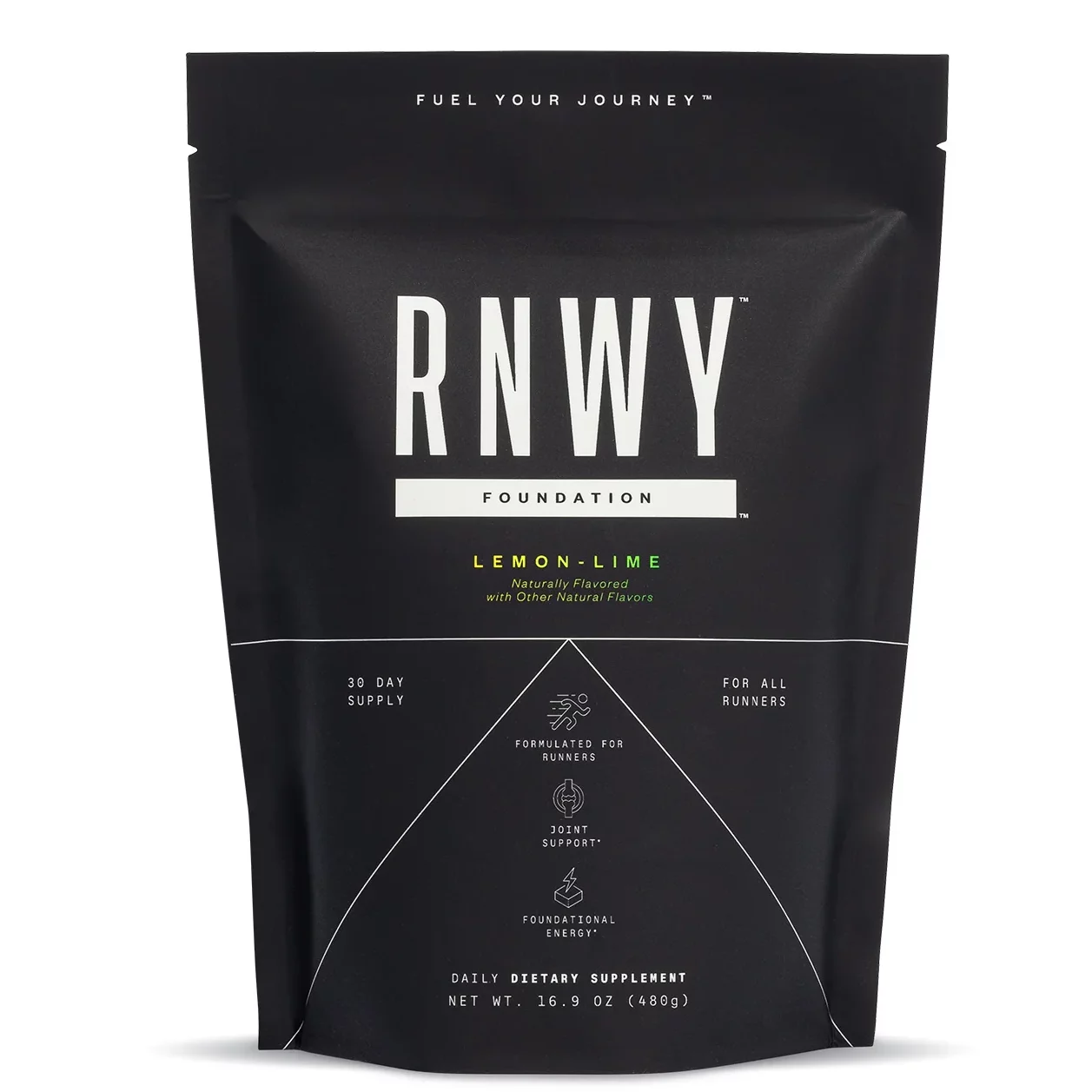
Then, I found Up2U, a native whey protein isolate powder and ready-made protein drinks. Native whey protein isolate is created through cold filtration, and their products add lactase so they are suitable for runners with lactose intolerance. Their drinks & powders contain 15 – 17 gm protein, which is lower than I recommend. When asked, they stated their product is higher in leucine therefore we don’t need as much total protein. I found research that supports the claim of higher leucine levels, but I still believe we need to adjust protein needs for age, body size, & training goals. Many runners will need more than one serving to meet their needs – or add another protein source.
What is it: A clear whey protein drink – blood orange & mango peach or an unflavored protein powder
What Meghann likes about it: It’s an option for getting protein in post run that is not a creamy, milky base. The ready-to-drink option is nice for someone who is looking for that clear liquid, fruity protein drink vs creamy. The protein powder is unflavored and a great option to mix into baked goods, oatmeal, and other foods to increase protein intake. I still prefer a vanilla, creamy whey protein isolate – but this is by far the best tasting clear protein drink on the market.
Who may need it: Anyone who is looking for a whey protein recovery drink that is a clear, fruit flavor instead of a creamy, milky drink. The powder is good for anyone looking for a high quality protein powder without added artificial sweeteners.
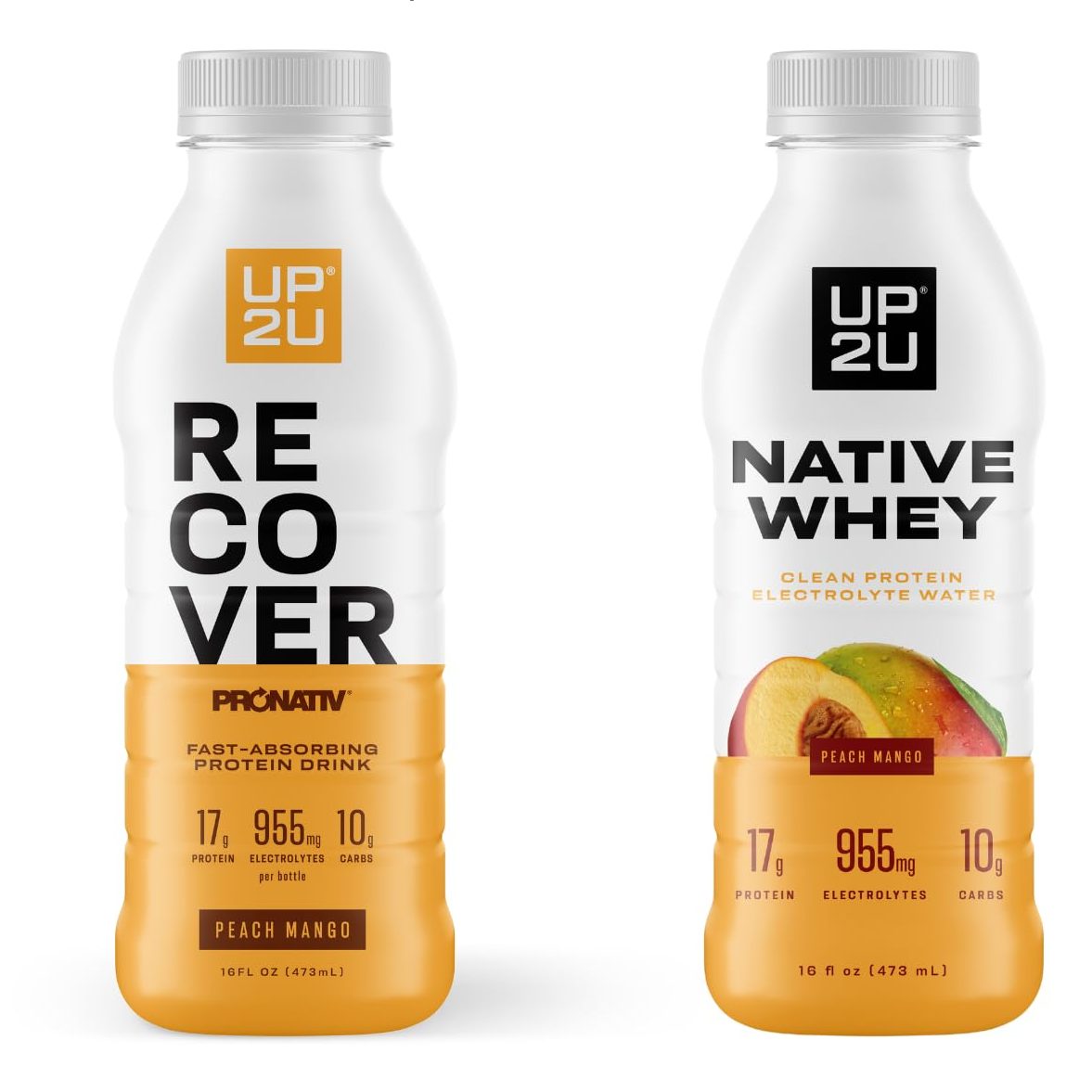
As I viewed and tasted products, I was trying to share them in real time via my instagram stories at TRE – you all were the most engaged in the Xact Energy fruit bars. These were new to me but not to a lot of you. This is a company based in Canada so flavor options vary for us in the US.
What is it: A 100 calorie, 25 gm carbohydrate gummy fruit bar meant to be taken during exercise like a gel or chews.
What Meghann likes about it: The texture was amazing – much softer than our typical sports chews. It reminded me of Chuckles Jelly candy but less sticky inside. It’s also very easy to underfuel with chews. For a runner looking for a chew vs a gel, this product could be quite magical. The texture & flavor of this product make it incredibly unique.
Who may need it: Runners who like chews vs gels but want to make sure they are consuming enough total fuel.
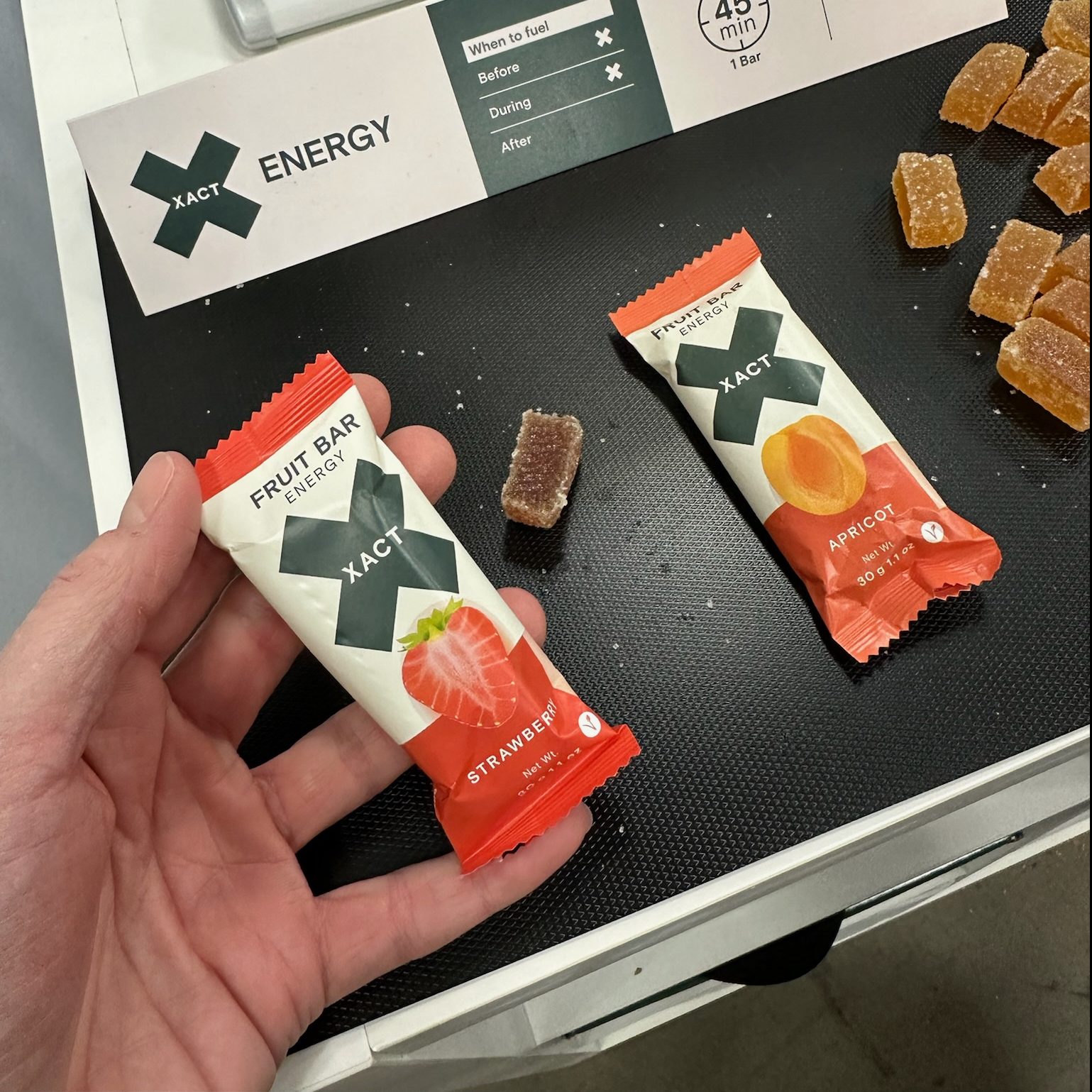
Another product that caught my attention was by Seattle Gummy Company. They make many different gummies but the high sodium, HydraFuel chews were the most intriguing.
What is it: A pack of 4 gummies that contain 37 gm carbohydrates & 270 mg sodium. The gummies themselves were a little sticky, but the Sour Patch Margarita flavor was good. As expected, they tasted slightly salty.
What Meghann likes about it: You’ve all made it very clear that you are looking for higher sodium fuel options, so this fits that bill.
Who may need it: Runners looking for a higher sodium option. I also think a pack of these could have a place in addition to your normal fueling to give you that extra sodium and carbs throughout your training runs & races.
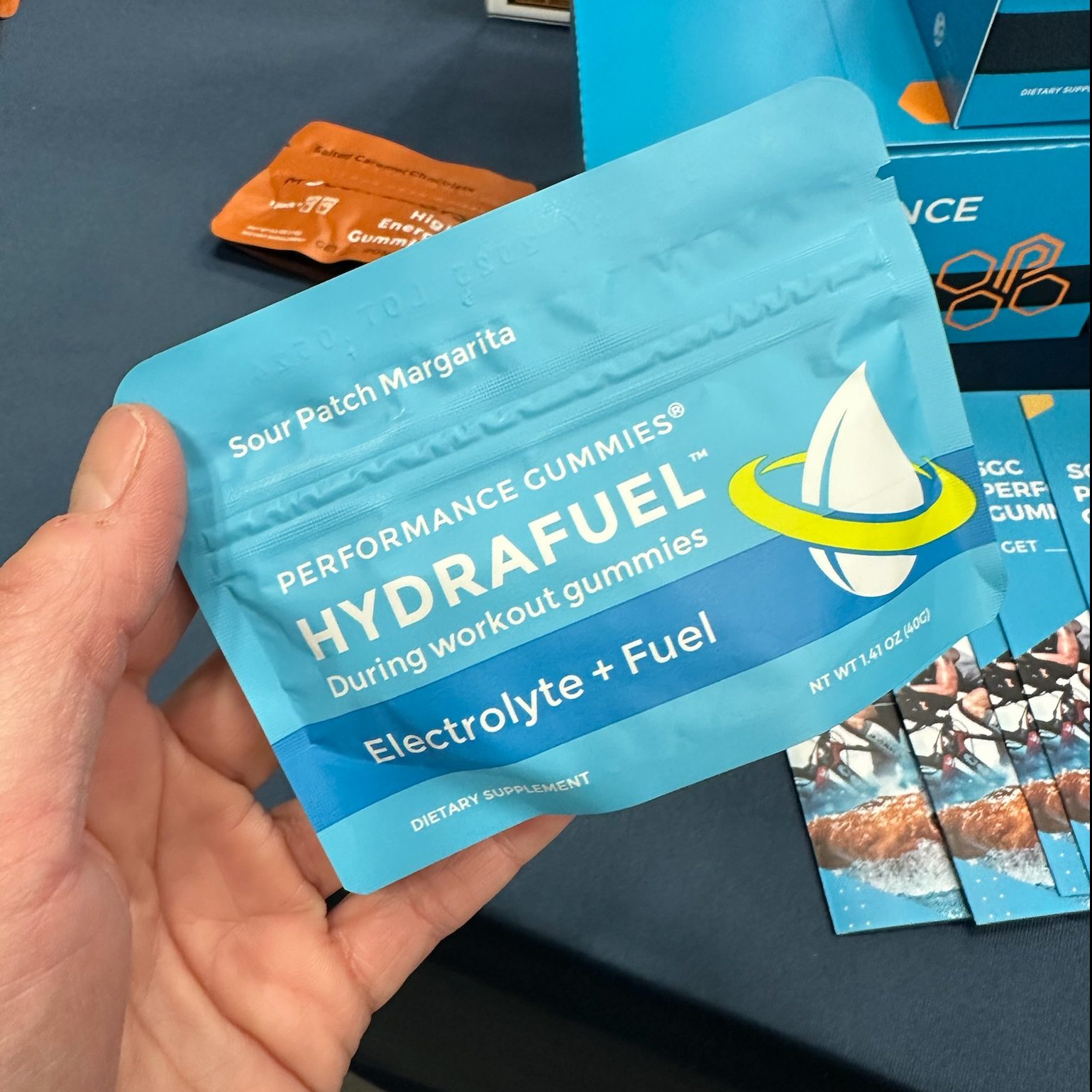
While not a new product, newish packaging put this Cheribundi back on the map for me.
What is it: A tart cherry juice concentrate available in single serving 2.5 oz pouches. They also make a sleep product that adds melatonin & magnesium.
What Meghann likes about it: We have plenty of research to support the anti-inflammatory, improved recovery, better sleep properties of tart cherry juice. These supplements make it easy & portable to add in tart cherry to your routine.
Who may need it: Runners looking for help speeding up recovery, decreasing muscle soreness, and improved sleep may want to give tart cherry a try. I particularly support this because it is considered a food product so there is minimal risk involved.
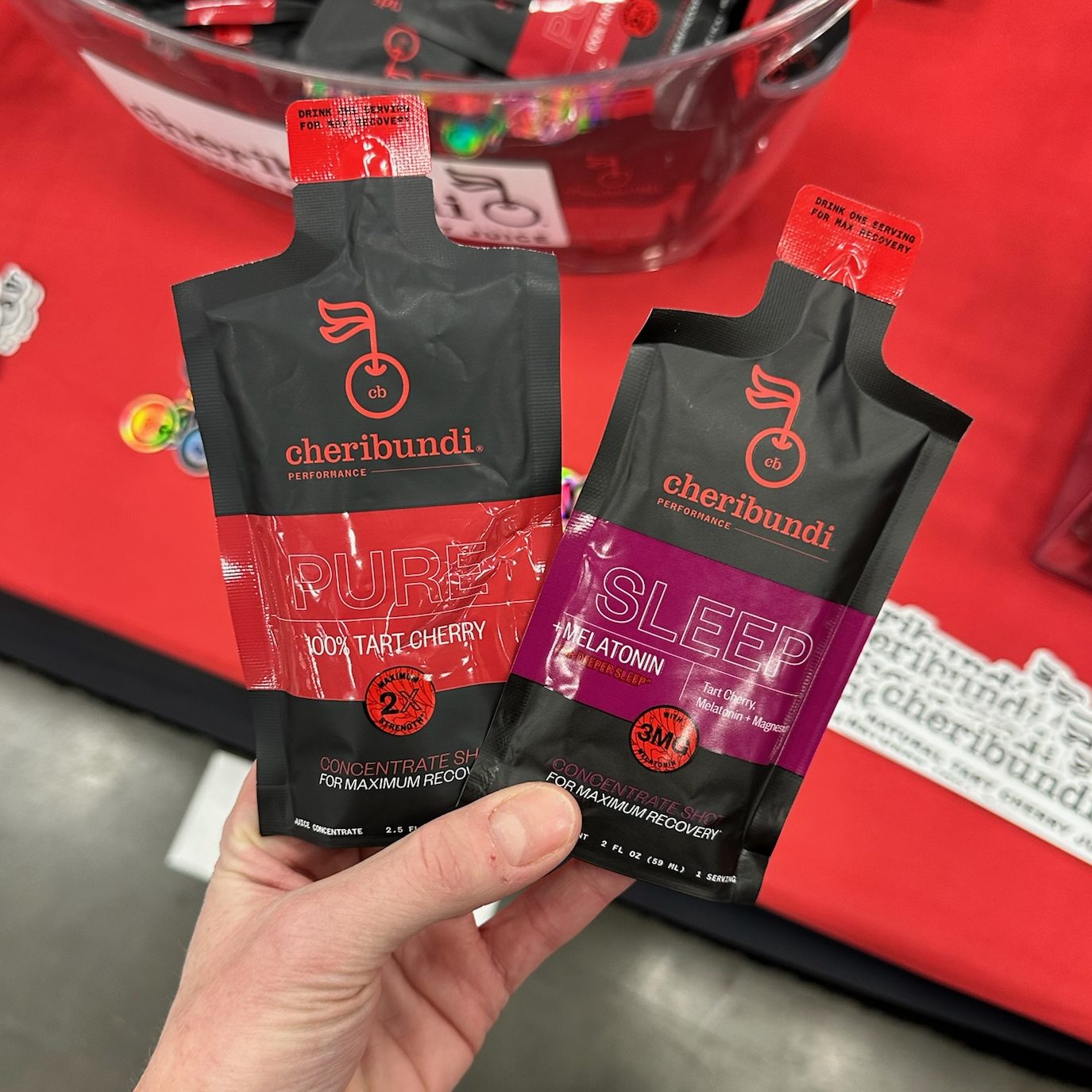
New Flavors of our Old Favorites
Nearly every brand was highlighting a new flavor of an existing product. If there’s one thing we know, runners are particular about their nutrition flavors. Our favorite sports nutrition companies clearly caught onto this and are tossing us some new options.
Clif Bloks added 2 sour flavors to their existing line, sour green apple & sour strawberry lemonade. Each pack has 2 servings. One serving contains 21 gm carbohydrates & 107 mg sodium. These were not available to try yet, but I can see these being particularly attractive for people who get ‘sweet fatigue’ during races. That sour punch would be a nice change up.
Spring Energy added an orange flavor option to their 100 calorie gel – Power Snack. And, there are 2 more flavors coming soon – tbd on what those flavors will be.
Honeystinger added a flavor Stingerita Lime Chews to their robost flavor options. It contains 50 mg caffeine, 130 mg sodium & 40 gm carbohydrates per package. My first sub-3 hour marathon was fueled by Honeystinger chews, so they do have a special place in my heart and this new flavor did not disappoint.
UnTapped has 3 new liquid drink mix flavors coming out in 2024. These include Mapleaid, Grape Mapleaid, and Lime Mapleaid. Each of these contains 250 – 300 mg sodium. To me, these tasted exactly like you’d expect – like watered down maple syrup.
Pickle Juice added a chili lime flavor for all the dill haters out there. It tasted just like Trader Joe’s chili lime seasoning in liquid form. I’m still not sold, personally, on drinking pickle juice during runs – but if this is your thing, you may enjoy this.
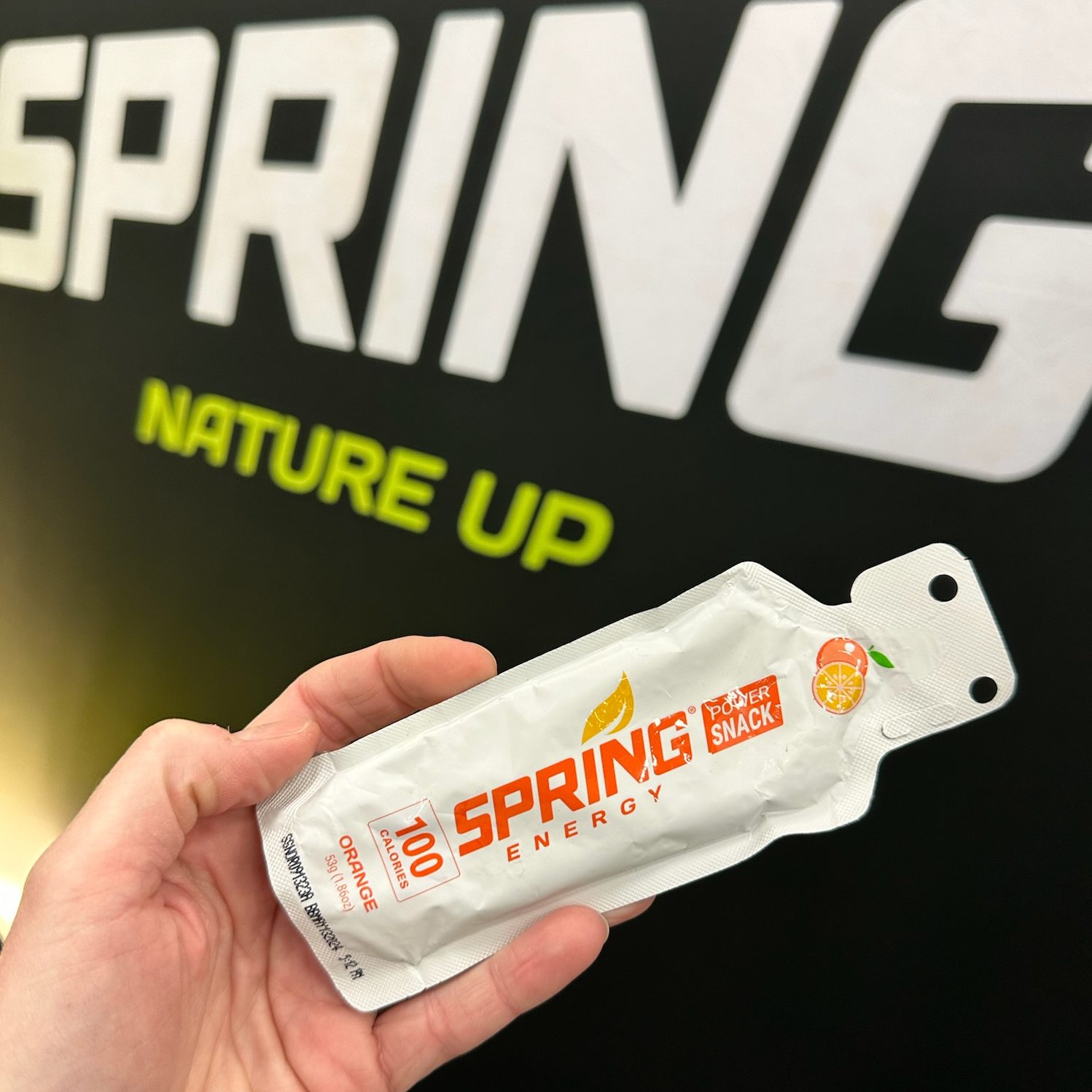
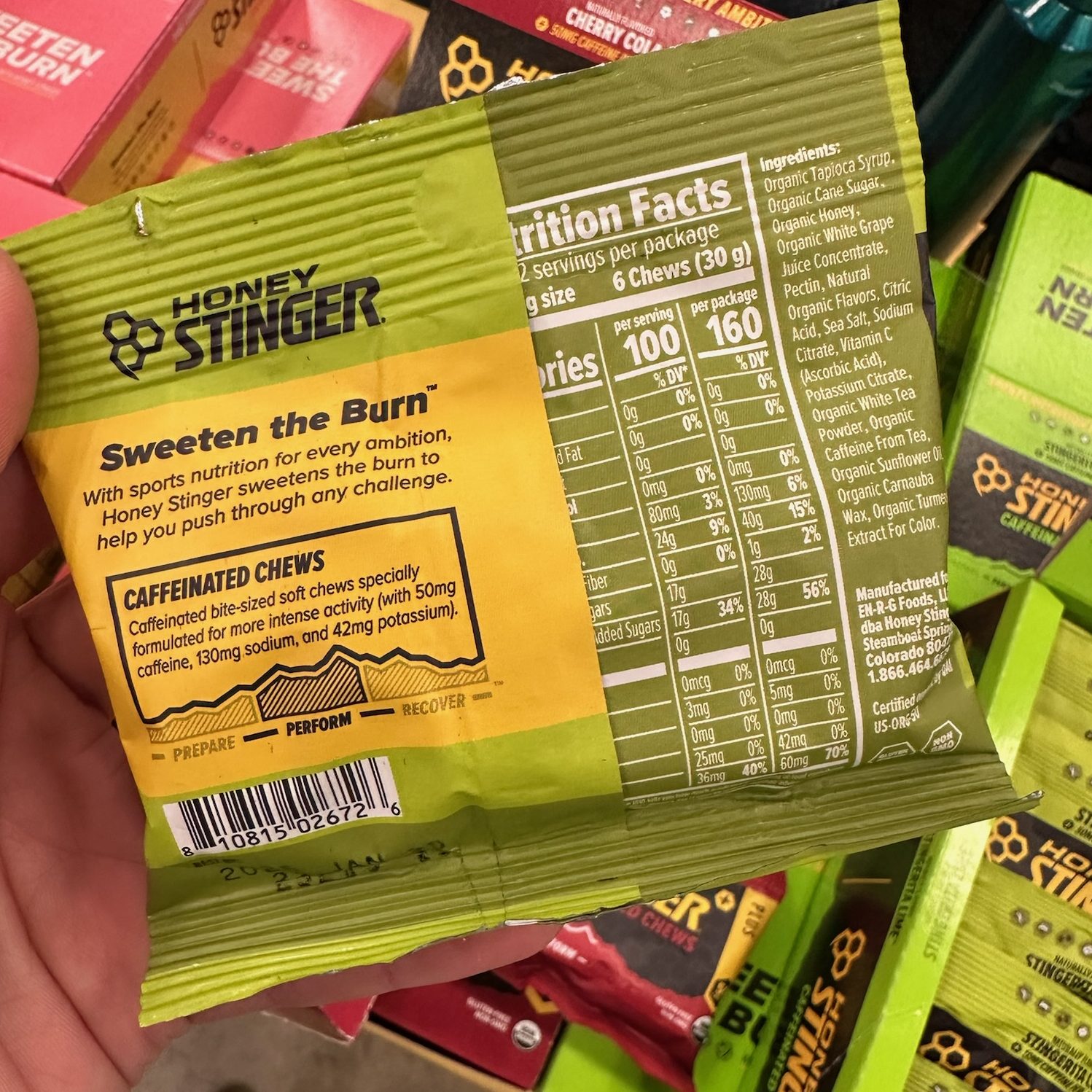
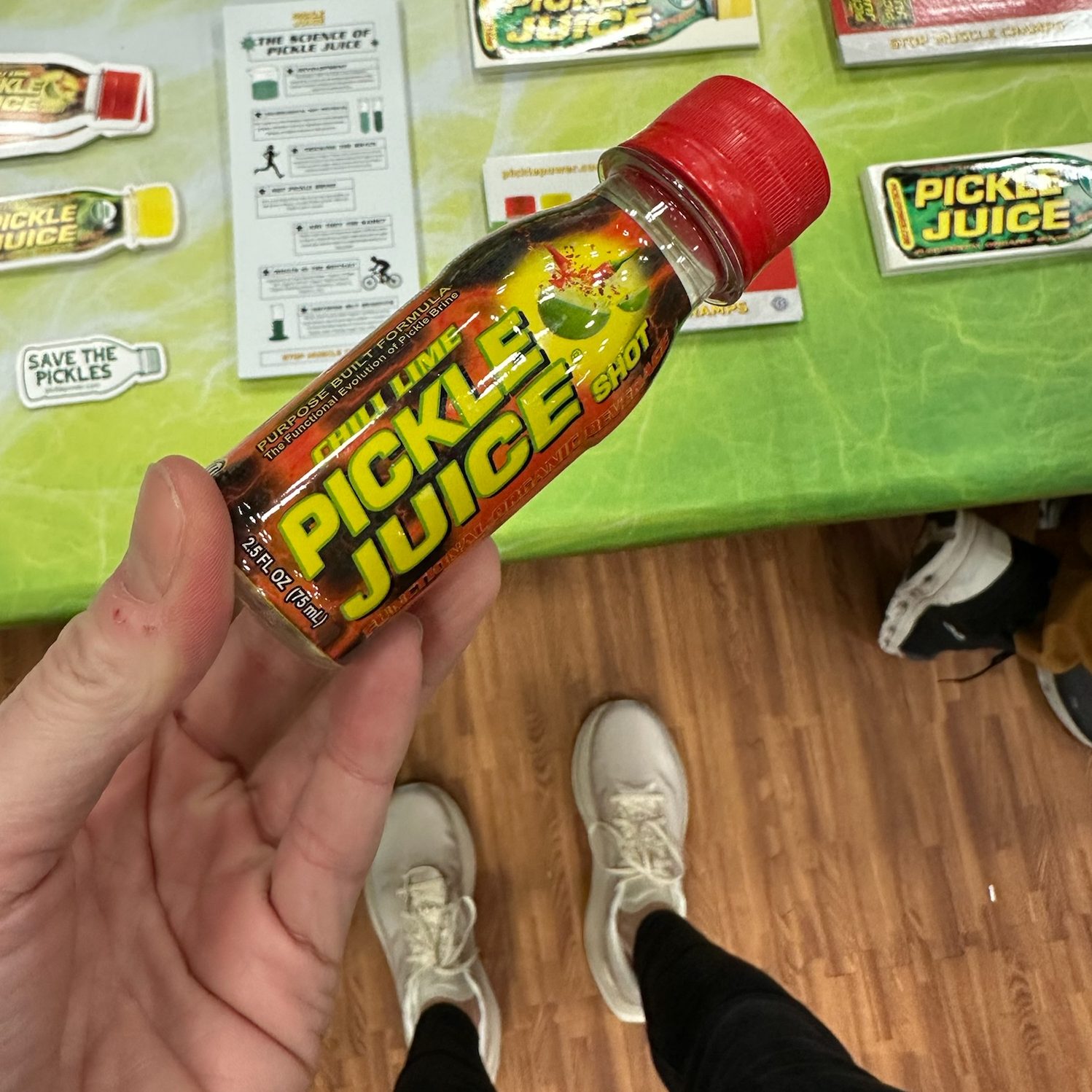
Different Protein and Energy Bar Options
We certainly don’t have a shortage of protein and energy bar options at our finger tips. But for some reason, I am constantly on the look out for new options that are delicious & make sense nutritionally. If you have followed along, you know that I don’t like added fibers, sugar alcohols, or anything funky in my nutrition bars. These bars below fit the bill and tasted quite lovely.
Eat Jam Bar was a new brand to me, and I was surprised to learn that their founder was the former cofounder of Powerbar. The Malt Nut Melody flavor was hands down my favorite. I put this bar in the same category as Picky Bars. But, to be honestly, they were tastier! I would use this as a snack, as it has a nice balance of carbs & protein. And, they are available in plant based & whey protein options. The Malt Nut Melody bar has 240 calories, 7 gm fat, 34 gm carbs, and 10 gm protein.
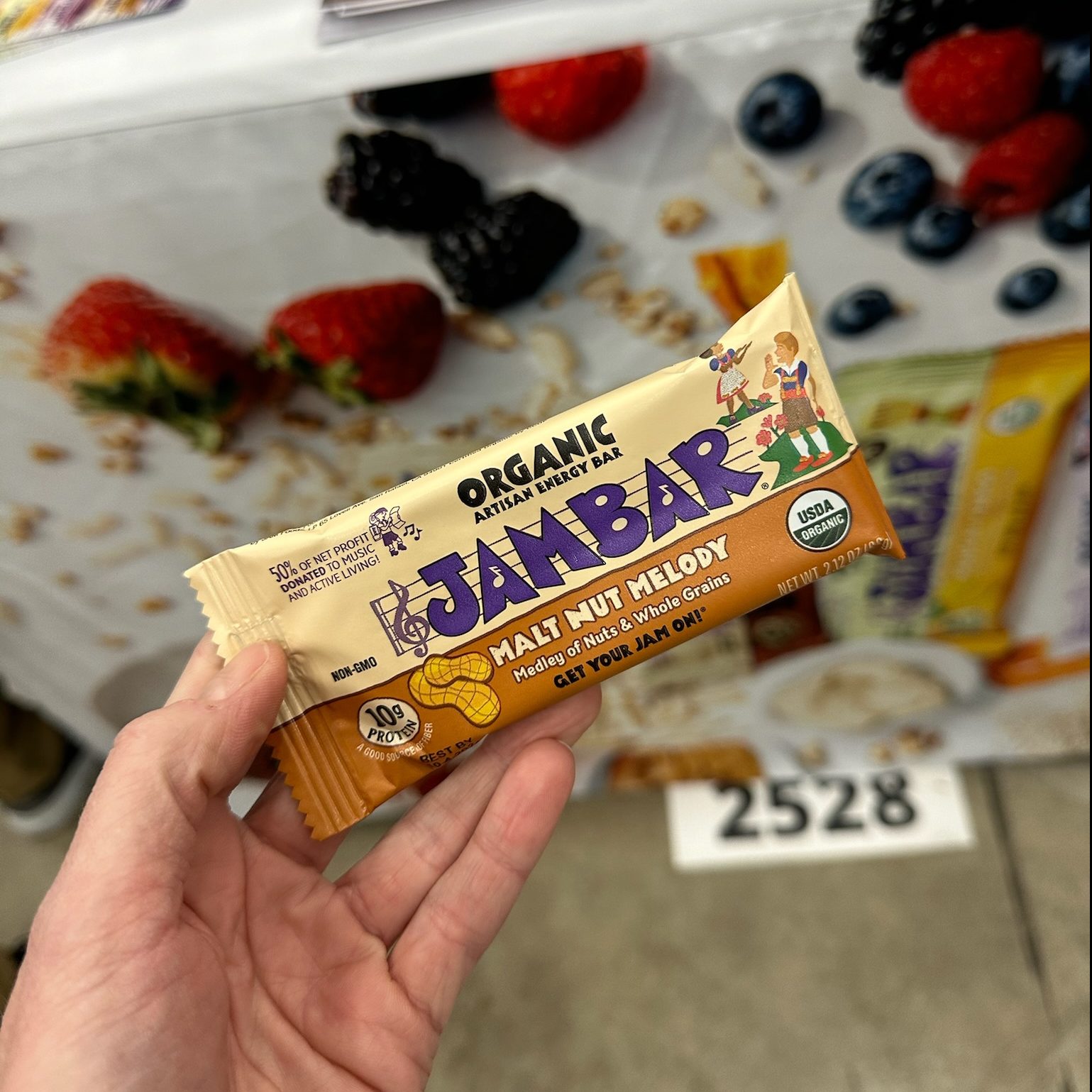
Bonk Breaker has been on my radar, but this was my first experience with them. Not only were the employees particularly rad humans, these bars were so delicious. Nutritionally, this is very similar to the Jam Bar – but all of these bars are plant based. The peanut butter & jelly was my favorite flavor & it had a layer of ‘jelly’ through the center. No worries, it was the same consistency as the rest of the bar so it’s not messy but did add to the whole flavor ambiance. I will absolutely be adding these into my snack repertoire. The PB&J bar has 260 calories, 11 gm fat, 33 gm carbs, and 11 gm protein.
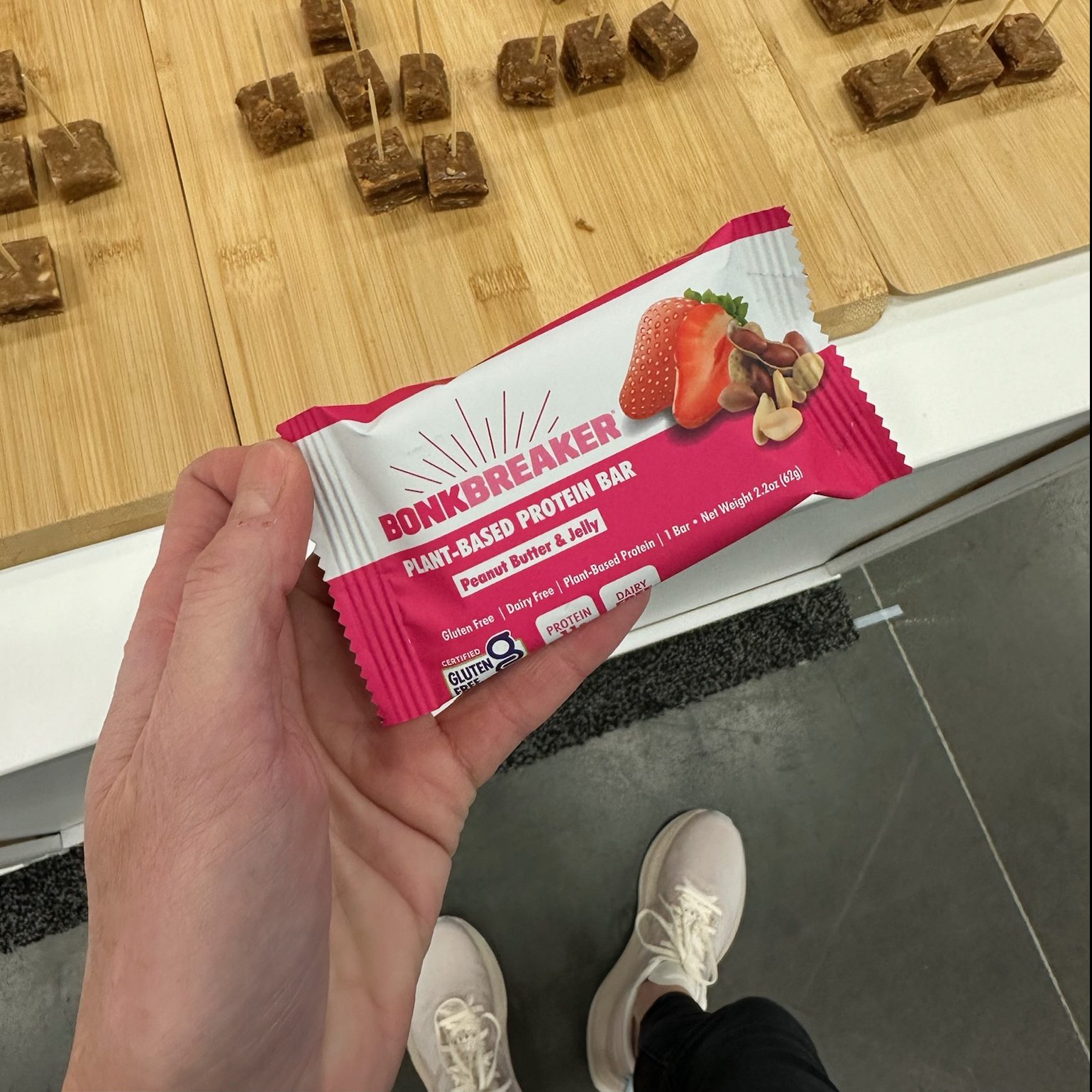
Naak is a Canadian company that makes many sports nutrition products, but I was particularly intrigued by their Ultra Energy bar with cricket protein. They also have plant based protein bars as well. Their bars contain 200 calories, 7 gm fat, 27 gm carbs, & 7 gm protein. These are marketed to use during ultra endurance activities, which I totally support, but I also love the idea of these for a snack for all runners.
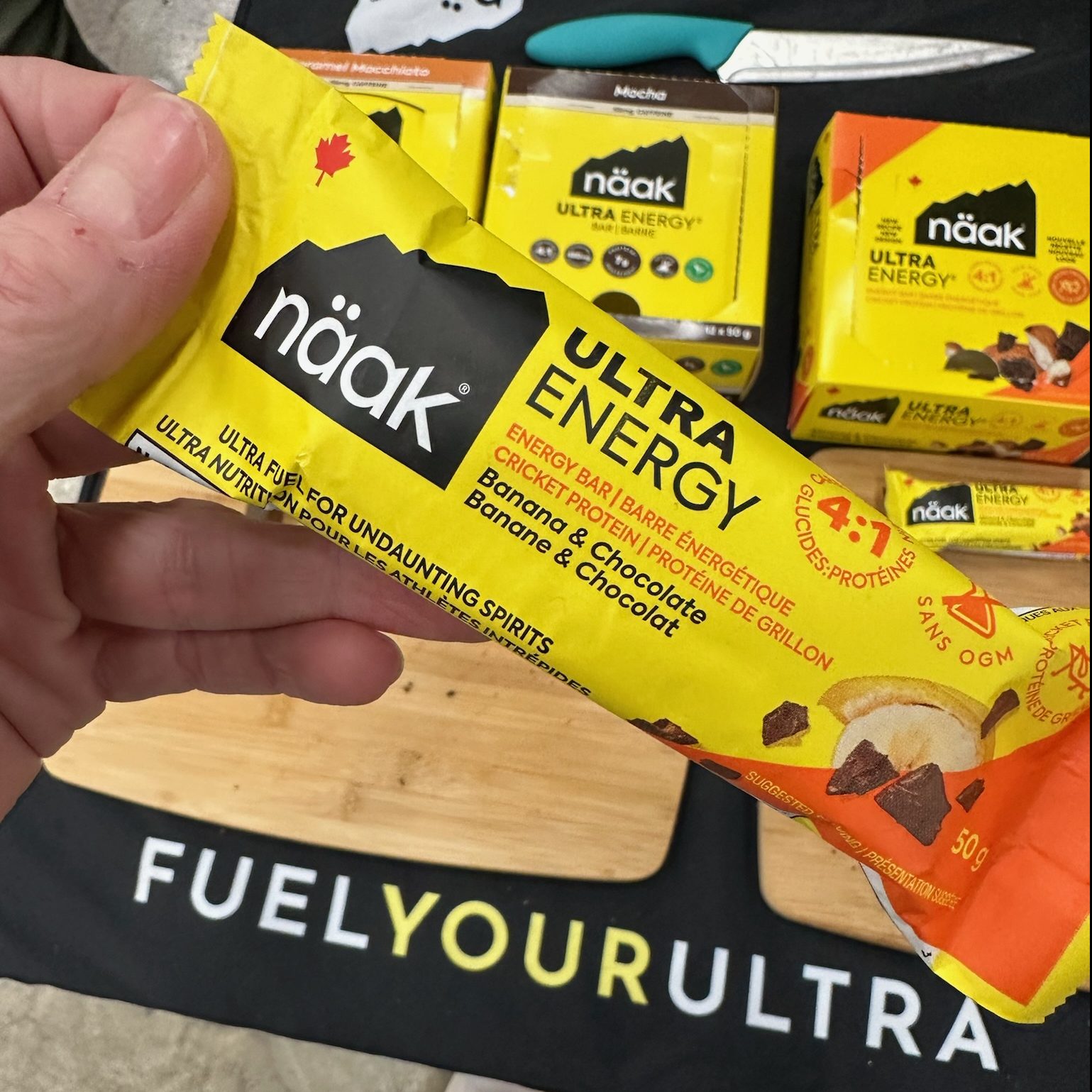
Honeystinger gave me a small sample of their new protein bar that they said tasted like a PayDay, the Peanut Sunflower Seed protein bar. Swap the peanuts for sunflower seeds and they aren’t wrong – very PayDay-esque. It was good enough that I went back and they gave me a full size bar to take home. It would also be considered a good snack with 260 calories, 15 gm fat, 21 gm carbs & 14 gm protein.
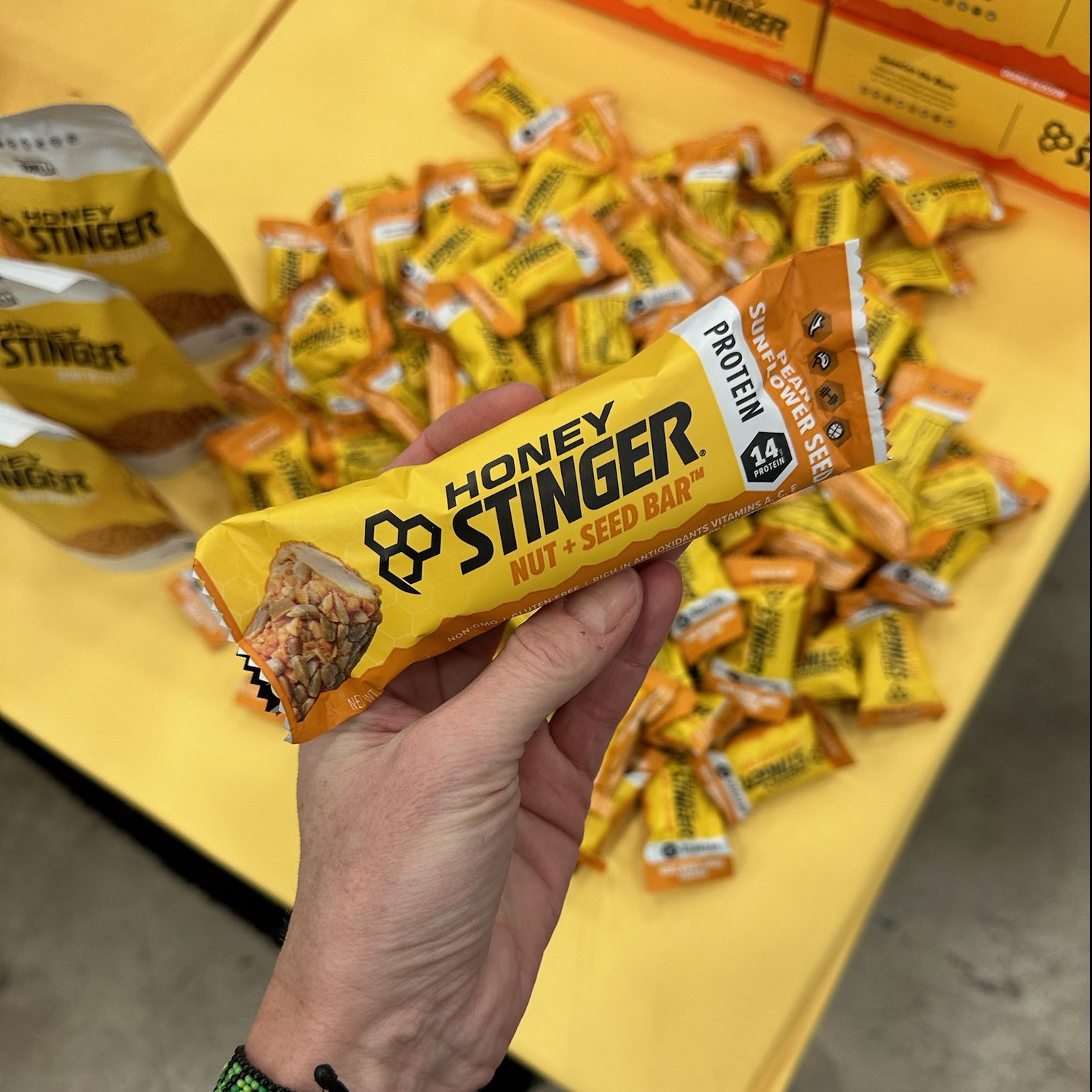
Skratch energy bars are not new to me, but they deserve their own shoutout here for being delicious as well. I love the Raspberry + Lemon option, but you can never go wrong with the Peanut Butter + Chocolate either. I love these for a snack or a long, slow bike ride. They have 270 calories, 14 gm fat, 30 gm carbs, and 5 gm protein.
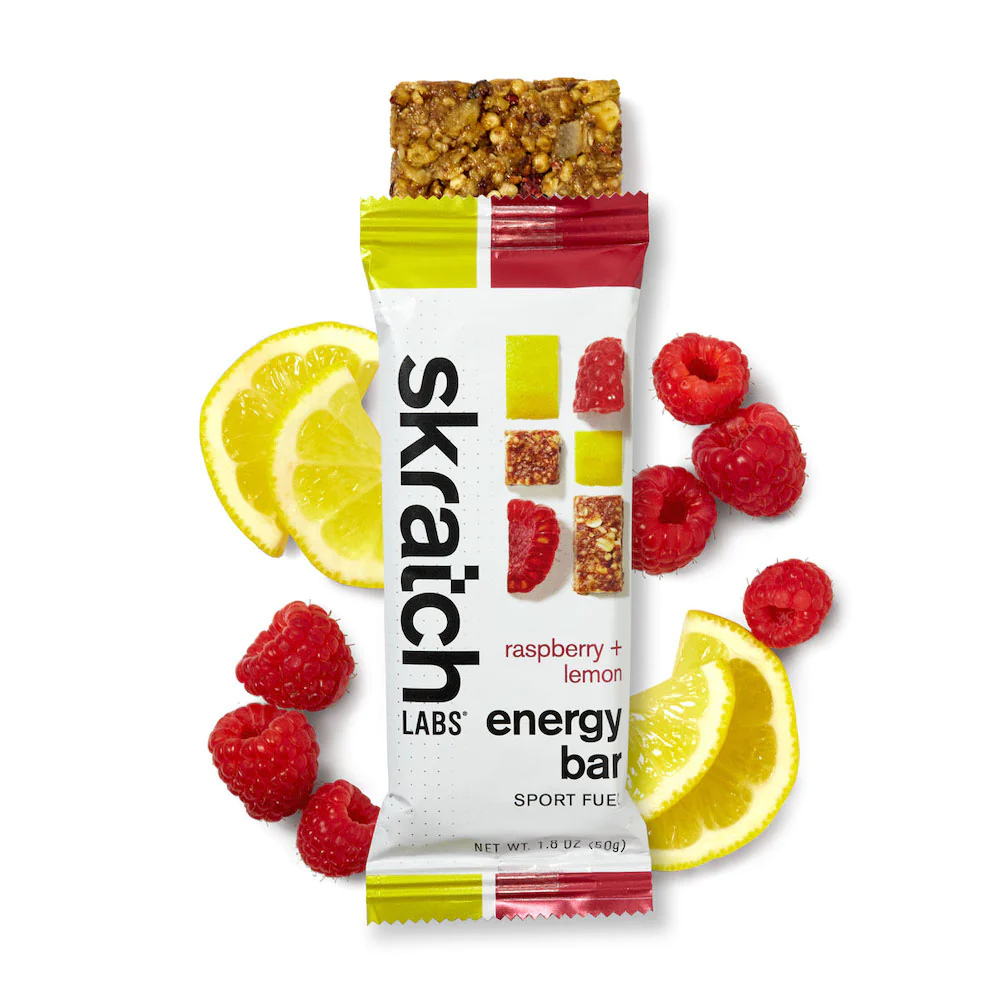
One thing is true – we will never be at a loss for products to try. Let us know in the comments what you are enjoying!
Disclaimer: The content in our blog articles provides generalized nutrition guidance. The information above may not apply to everyone. For personalized recommendations, please reach out to your sports dietitian. Individuals who may chose to implement nutrition changes agree that Featherstone Nutrition is not responsible for any injury, damage or loss related to those changes or participation.
Why you couldn't hold your goal pace during your last race...
We train hard. We dial in our nutrition & hydration. And then something happens on race day, and we can’t hold the pace that we should be able to hold. It’s completely understandable to want to point the finger at one thing, so we know what to fix. But, sometimes, there are several factors at play, and many are out of our control.
If you have been in this situation, let’s talk through some of the variables & causes.
Nutrition & Hydration
First, let’s double-check our nutrition & hydration. We know that we need to consume the right fuel & hydration, at the right time, in the right amount, leading up to race day & during the race. Inadequate nutrition & hydration can lead to increased heart rate, slower paces, increased core body temperature, GI distress, and “hitting the wall”. Did you check these boxes for your race?
- Adjusting nutrition with mileage throughout training
- Practicing recovery nutrition throughout training
- Carb loading before your race (& doing it the right way!)
- Hydrating adequately during your carb load
- Eating enough carbs pre-race
- Fueling early & often during your race
- Hydrating with the correct amount of fluid & sodium before & during your race
Weather
If Mother Nature throws any of these conditions – warmth, humidity, direct sun, rain, snow or windy conditions – at you, your pace may be affected. Weather changes can cause our Rate of Perceived Exertion (RPE) to increase, making our pace feel harder than it should. Most people need to adjust their pace. Some people are more tolerant than others of running in different conditions.
Course Terrain
There’s a big difference between a flat course & a hilly course on race day. Some of us are more affected by hills than others. Hills will increase our heart rate and may make it more difficult to take in fuel. Adjust your pace as needed and try taking those gels on the downhill next race.
Stress
There are both good & bad stressors – but too much of their stressor is not a good thing. We may experience stress from our jobs, family life, running, sleep, travel, etc. Managing stress during training and before race day is important! Anxiety at the start line will burn through our precious glycogen stores.
Where to go from here...
If you are pretty sure that you nailed your nutrition & hydration plan, as well as your training you may have had to slow your pace due to one of the above external factors, and sometimes, we just have a bad day and don’t know why. Or, maybe we woke up sick a couple of days post-race and were fighting a cold on race day. So what now? While it isn’t always easy, we take all of the knowledge we’ve learned and move on to the next race! Because if there is one thing we know about runners, we are persistent little devils!
PMID: 19225360, 30849085, 31696453, 22649525, 23846824
Disclaimer: The content in our blog articles provides generalized nutrition guidance. The information above may not apply to everyone. For personalized recommendations, please reach out to your sports dietitian. Individuals who may chose to implement nutrition changes agree that Featherstone Nutrition is not responsible for any injury, damage or loss related to those changes or participation.
Meghann's Nutrition Tips for the 2023 NYC Marathon
1. Carb. Load.
One of the best things you can do for yourself in the days leading up to NYC is CARB LOAD. Carb loading will help so you don’t hit the dreaded “wall”, will help your muscles work their best till the finish, will help you hold onto more fluid for race day and can make you feel better overall so you can enjoy the race and finish with a smile on your face!
If you need more info on carb loading, check out my Carb Loading resource page with lots of info, including the carb load calculator and a link to my FREE carb load guide.
2. Eat 2X Pre-Race
With a late start race (Wave 1 starting at 9:10 am through Wave 5 starting at 11:30 am), you should eat twice before your race. Whatever your start time is, subtract 4 hours – and that should be your 1st eating time. Aim to eat half your body weight in carbs. (For example, 150# runner needs 75 gm carbs.) Your 2nd eating time should be 2 hours after that. For this one, aim for the same amount of carbs again.
Example:
Start time: 10:20 am
Runner’s weight: 150 lb
6:20 am: 1 bagel with 2 Tbsp peanut butter + 1 serving Skratch (75 g carb)
8:20 am: 6 full graham sheets (72 g carb)
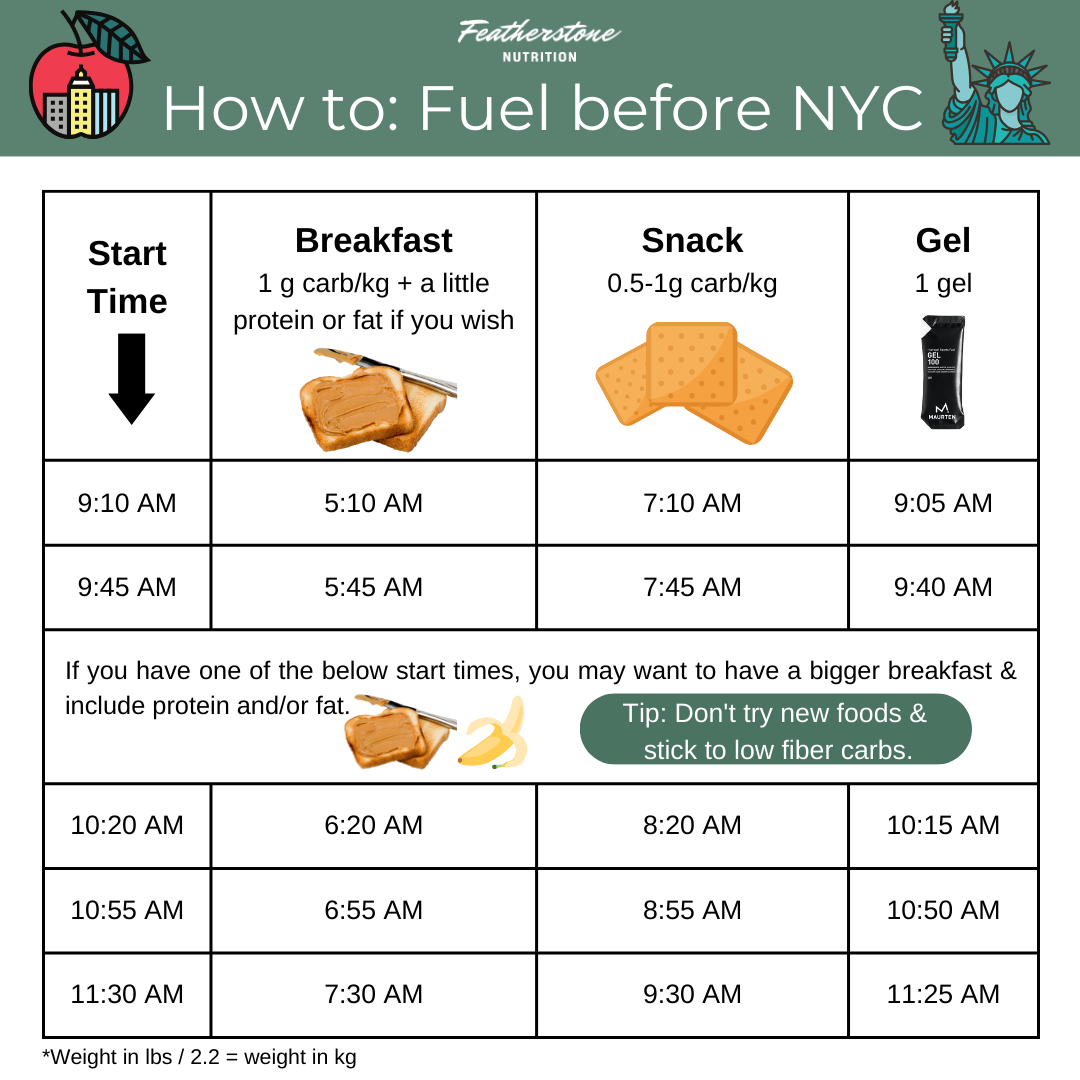
3. Plan Your Hydration
Let’s not just wing it when it comes to hydration. The weather forecast, as of now, looks like a low of 49 and high of 61 degrees Fahrenheit. For those with a later start, or those running longer, the temp might start to feel a bit warm but totally manageable. (Ideal marathon temperatures are 45 – 55 degrees Fahrenheit.)
Know your race day plan! Make sure you are drinking enough fluid & getting enough electrolytes during the race – whether that is from a handheld or on-course fluids. We have lots of info on hydrating for races here and in this blog post How to Hydrate on Race Day.
Carb loading properly will help your body hold on to fluid for race day, but if you are a heavy/salty sweater, you may want to hyperhydrate the night before the race.
4. Fuel Early & Often
Your first serving of fuel should be at 10 minutes PRE-RACE! And roughly every 30 minutes or so throughout the race (hopefully, you will have had lots of practice fueling during your long runs to know what works best for you.) If you find that you can no longer stomach a gel towards the end of the race, you can swish & spit, as we have carb receptors in our mouths to signal the brain about fuel!
5. Celebrate! ... but also, get in your recovery nutrition
Getting through any race warrants a celebration! Have fun with your family or friends. Eat that celebratory meal. Drink that celebratory cocktail (alcoholic vs non-alcoholic is up to you).
Try to get in a source of protein & carbs within 30-60 minutes post race. Chocolate milk or a protein bar are easy to have a friend bring to you, have in your race bag or find after the finish line. Then, when you can, get a full meal in. Keep hydrating the rest of the day, so you don’t feel crummy and your muscles recover better.
Disclaimer: The content in our blog articles provides generalized nutrition guidance. The information above may not apply to everyone. For personalized recommendations, please reach out to your sports dietitian. Individuals who may chose to implement nutrition changes agree that Featherstone Nutrition is not responsible for any injury, damage or loss related to those changes or participation.
What does Kipchoge eat for breakfast on race day?
Meeting the GOAT: Eliud Kipchoge
I had the privilege to run the Berlin Marathon with Abbott Global. The week was an absolute blast! I loved the city, the crowd, and the race. I came away with a PR <right after turning 40> of 2:49:55 just 15 years after my first marathon of 3:58. What a journey!
After the marathon, I received a text and was told that I could come meet Eliud Kipchoge if interested. Of course I was interested, and I hightailed it to meet the GOAT. It was an absolute dream. He was the nicest human, and I am so grateful to have met him and for his kind words <did Kipchoge just tell me that I’m fast?! yes he did.>
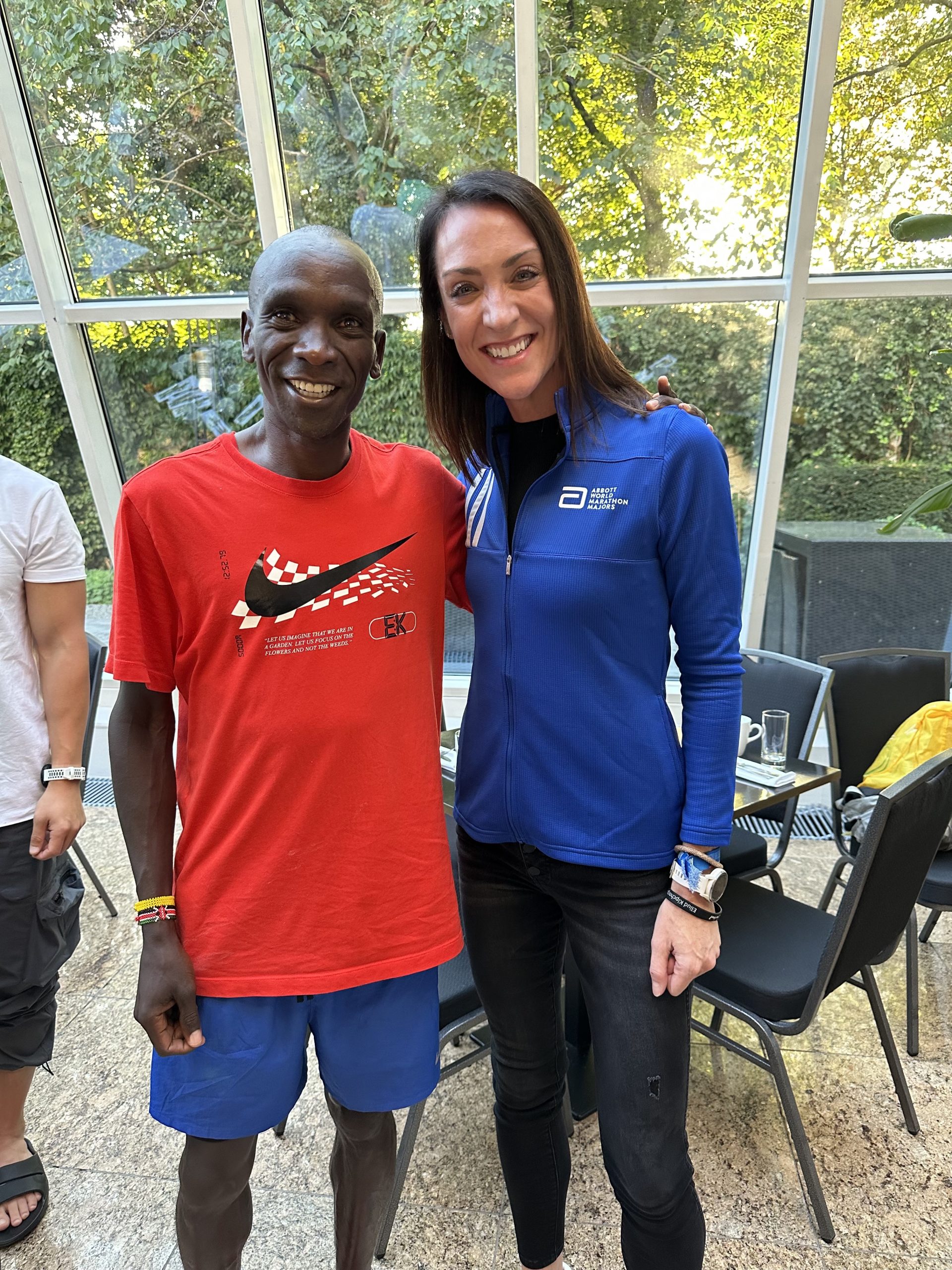
What does Eliud Kipchoge eat for breakfast on race day?
Eliud and I chatted about the race for a bit. Then, I just had to ask him: “What do you eat for breakfast on race day?” and “What is your favorite food?” Check out the video below to find out!
Meghann's Berlin PR Race Recap
I flew across the world to run my 14th marathon, collect my 4th Abbott World Marathon Major’s star and attempt to PR and to break 2:50 in the marathon. Here I am telling you all about it & answering all your questions about my experience.
The Carb Load
Traveling while carb loading takes some preparation. We want to make sure we have the carbs & fluid easily at hand to stay on top of our carb loading plan. Using the Carb Load Calculator my goal was 450 gm carbs per day x 3 days. My carb load started the day I landed in Berlin so I packed 2 bagel sandwiches <one with PB + Sriracha and the other with PB&J> so that I didn’t have to worry about finding food as soon as I landed or get behind on the carb load. Let’s be honest – getting behind on the carb load is NOT ideal.
I completely underestimated how much the time change would impact my appetite. I had zero appetite from jetlag + the time change and really felt like I was forcing myself to eat that first day. To make this a little easier, I stopped by a local bakery and bought 2 fresh sourdough loaves + a burrata sandwich and enjoyed this significantly more than the stale bagels from Ohio. When we carb load, we also need an additional 30 oz fluid per day. The bottles of water in Berlin were all 8 oz glass bottles so I quickly confiscated as many as I could from the hotel lobby and made a mental note to go to a store & find a larger bottle.
All-in-all the carb load was a success. However, it was a very different experience for me without a real appetite the whole time. I can totally see how someone could really screw this up when traveling to another country! <don’t be the someone – have a plan!>
I like to keep things very simple & bland the day before the race to keep my stomach happy on race day. Cue grahams + soft pretzels and I was a very happy human. When in Berlin, be sure to carb load on soft pretzels!
Day One Carb Load: 2 bagels, burrata sandwich, 2 sourdough rolls, chicken sandwich, Skratch crispy rice bar, graham crackers = 440 gm carbs
Day Two Carb Load: Graham crackers, Rise protein bar, Maurten solid bars, burrata pizza, sourdough rolls = 448 gm carbs
Day Three Carb Load: 4 soft pretzels, graham crackers, Maurten solid bar = 480 gm carbs + 2 Liquid IV in 24 oz water before bed to Hyper Hydrate

Race Morning
The Berlin Marathon starts at 9:15am which is a little later than I’d like, if anyone is asking for feedback. So, I woke up at 6am – ate 4 graham crackers + drank 2 espresso’s from my room’s coffee machine + drank a tiny, 8 oz glass bottle of water. Got ready & was out the door by 7am. I chose to drop 2 bottles at the ‘Personal Refreshment’ truck – which had to happen by 7:45am and I had a 1.2 mile walk to this area from my hotel.
Personal Refreshments: any runner in the Berlin Marathon can drop their own hydration bottles at a truck before the race – label them with their name, bib number, and drop point. You have the option of dropping a bottle at all or none of these points: KM 5, 9, 15, 20, 25, 30, 36, 40.
With 47,912 runners registered I figured there was a slim chance I would actually find one of my bottles but decided to take one for the team here & see how it worked. I bought two very obnoxious bottles & rubber banded a bright pink ruler to the bottles to make them taller & stand out more. I dropped them at 25k & 30k hoping maybe I’d find one of these two bottles. As I got to the truck drop, I realized that my ridiculous bottles were the least ridiculous of the crew. Peacock feathers, foil hats, pencils, all the tape, other rulers – all added to bottles to make mine the shortest in the truck. I laughed as I dropped them off and was glad I wasn’t banking on finding any of them in my race nutrition plan.
I met up with a friend from Cleveland, Christopher, before the race and it was wonderful to have another human to hang with during the 90 minute wait. We ate more grahams, sipped Skratch hydration, and sat next to the start line waiting for the corrals to open.
Race Morning Nutrition: 8 graham crackers + 1 serving Skratch + 2 shots espresso = 100 gm carbs + 16 oz fluid
In true crazy Berlin fashion, the corrals opened at 9:05 am after the wheelchair start for a 9:15 am start. It was chaos. I looked at Christopher and told him we were jumping the fence to get to the front of our corral stat! It worked and we were able to get very close to the front of corral B just in time to see Eliud Kipchoge introduced & the start gun go off.

The Race
If you have ever seen the start line video of the Berlin Marathon and have not felt overwhelmed, you are some sort of super human runner. I have never seen so many people, so close together, in my life – let alone a marathon. I’ve run Chicago, NYC, and Boston and nothing compares to the vast sea of runners like Berlin.
But, it was go time – and with some slight bobbing and weaving – I found my pace in the first 2 – 3 miles. Cue thanking myself for insisting we jump the corral fences to get to the front of our corral. I felt smooth. I felt good. I felt confident in the plan. The plan was to start in the 6:25 – 6:30 pace range, settle in a little faster, and come through the half anywhere between 1:23 – 1:26.
The weather forecast for the marathon was 55 degrees at the start & 67 degrees by the time I would, hopefully, finish. Weather over 60 degrees is not ideal marathon weather, in my humble opinion. So, I knew I would need to be smart about hydration + get willing to hurt a little more than usual in the second half as it warmed up.
My Fuel Plan: Start with a 20 oz handheld of Skratch + 1 Maurten gel every 30 minutes <caffeine at the start & 60 minutes, the rest regular> and switching to water <or a Personal Refreshment bottle, if found> once my handheld was gone = 55 gm carbs/hour average
My fuel plan execution ended up a little different and I’m very happy with how it went. I took a caffeine Maurten 10 minutes before the race – as this caffeine will fully kick-in by 1 hour. As the race started, I was quite sweaty by mile 2. Shoooot. This is not good. I quickly decided I was going to drink my bottle of Skratch hydration early, not nurse it throughout the first half as planned. So, I started drinking decently large sips every mile starting at mile 2. At 22 minutes in, I felt great and decided to take my 1st gel a little early. Then, 50 minutes rolled around and I took the 2nd caffeine gel. My handheld was almost gone so I decided to save the last couple swigs for my 3rd gel, which I took at 1 hour 15 minutes & finished my Skratch handheld with it. I rolled through the half at 1:24:47. Still on sub 2:50 pace, just the plan.
At this point, I’m really hoping I find one of my bottles on course. So, I hung onto my handheld with the hopes of refilling it from my collapsable – ruler bottle contraption. I took my 4th gel a little before the 25k and glued my eyes to the Personal Refreshment tables. Chaos. So. Many. Bottles. As my eyes darted from one end of the table to the next, I never spotted my bottle. Shoot – alright, regroup. I threw my handheld bottle at this point & grabbed some water from the next aid station as I knew I was far too sweaty to stop drinking now. I took another gel as we approached the 30k table and again my eyes darted around for my second bottle. Success. My eyes locked onto my bottle & I grabbed onto that bright pink ruler and felt a huge sense of relief. I chucked the ruler & opened the bottle and started chugging it. Then, my rational brain kicked in and was like, staaaahpit, you can’t chug too much fluid at the 30k of a marathon or you’re going to hurl. I drank about 10 oz and handed off the rest to a friend next to me to finish.
I have been wearing a biosensor during my training that shows my blood glucose on long runs. I have been able to equate certain feelings, both mental & physical, on my long runs with needing to take more fuel. As this point in the race, my body felt strong – but my mind was faltering & heading places that were not conducive to holding my paces. <you know the thoughts – you can’t do this, slow down, this hurts, you can quit, who cares, how can you hang onto these paces for another ‘x’ miles, etc> So I took my 6th gel early – 20 minutes early at 2 hours 10 minutes – and those thoughts disappeared. Luckily, I had grabbed an extra gel at the 17 mile Maurten gel depot on course – so I now had an extra gel to take. When those negative thoughts returned, I took that 7th gel at 2 hours 30 minutes and got my head back into the game.
As I approached the Brandenburg Gate, I checked my elapsed time – did some math – and realized I was going to have to really pick up the pace to meet my goal of sub 2:50. I pictured myself doing those 1k repeats in training at a much faster 5:55/mile pace, did the math, and realized I was going to have to pull of two of those 1k repeats at a sub 6 minute pace to pull this off. So, naturally, I went for it. I ran my freaking heart out through the Brandenburg Gate and through the finish line. Stopped my watch and looked down… 2:49:55. I freaking did it.
My Actual Fuel Execution on Race Day: 7 gels + 30 oz Skratch + 4 oz water = 210 gm carbs or 74 g carbs/hour average + 12 oz fluid/hour
As I stopped my watch, I quickly looked around and realized I was one of the only ones smiling. Everyone around me was throwing up <so much barf – everywhere at the finish line>, on the ground, leaning against a railing, or bent down with hands on knees. And, I truly credit my nutrition & hydration plan out there for keeping me strong & allowing that final stretch to be my fastest of the day.
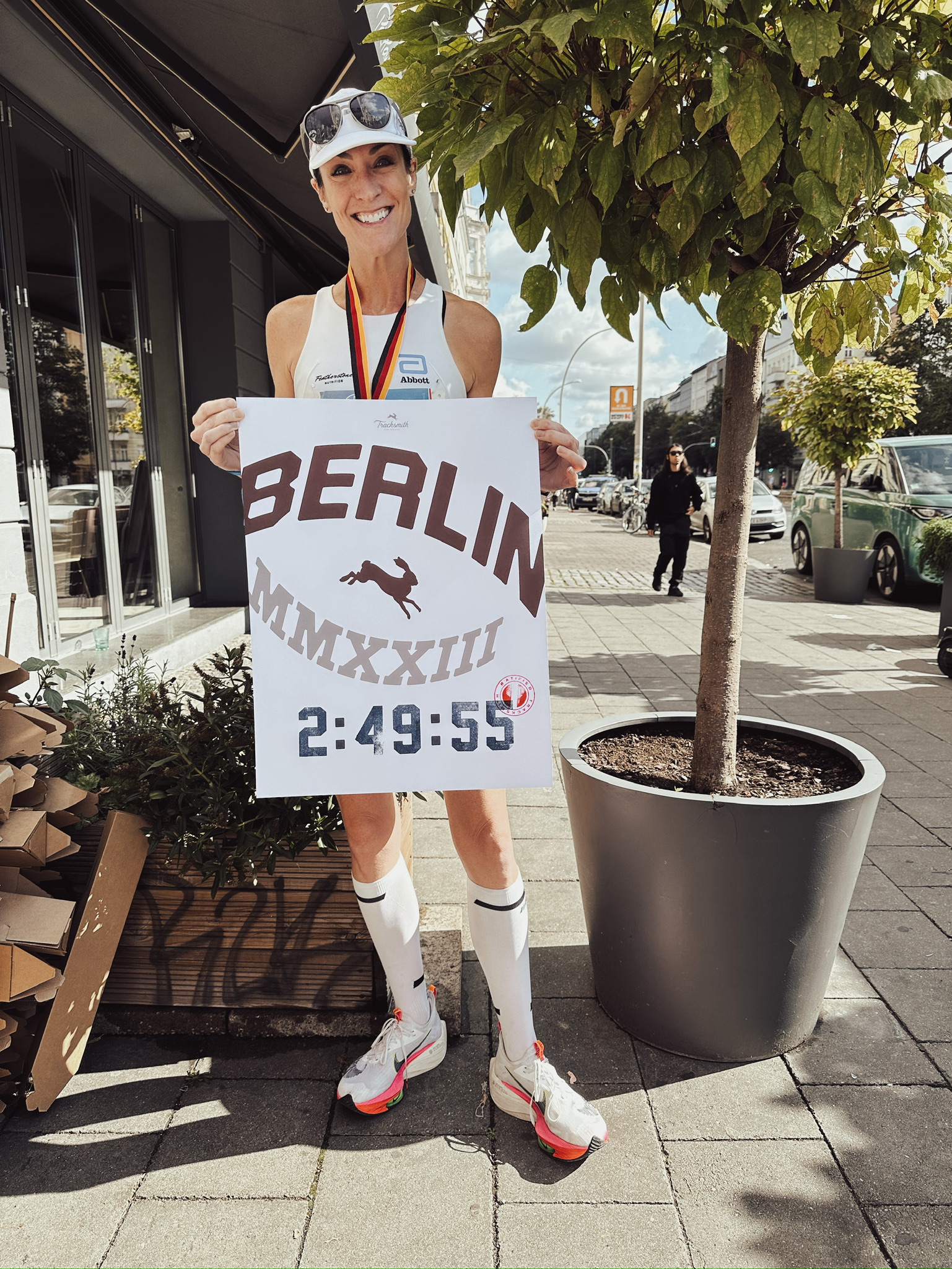
The Race Day Fit
The most common question I get is ‘where do you carry all your gels?’ Followed by, ‘but do you refill your water bottle and what do you do with it when it’s empty?’ Let’s chat clothing.
From bottom to top: Nike AlphaFly’s – the originals – still my favorite race day shoe. CEP compression socks because I have the crankiest calves in the world. Bandit split shorts, which are my new favorite. But, if you check out my race photos it’s pretty much like wearing briefs so make sure you’re cozy with that concept. A Lululemon crop with a rabbit pocket sports bra under it. Ciele Berlin hat. Goodr Mach G shades. And, an Amphipod 20 oz handheld filled with Skratch Labs Sport Hydration.
Now for the logistics. I do not like gels in my shorts. I typically put them in my bra’s cell phone pocket but running in a foreign country alone necessitated carrying said cell phone – so that pocket was in use. Given that I do not fill out any crop top or sports bra, I have room to stuff 6 gels in this area and I did. I lined up 6 gels between my sports bra & the lining of my crop top and this worked magically. That, folks, is where I carried all my gels. I started the race with 20 oz of Skratch in my handheld – and once this was gone, I chucked it. From there, I used water on course and then my ‘personal refreshment’ bottle I grabbed on course.
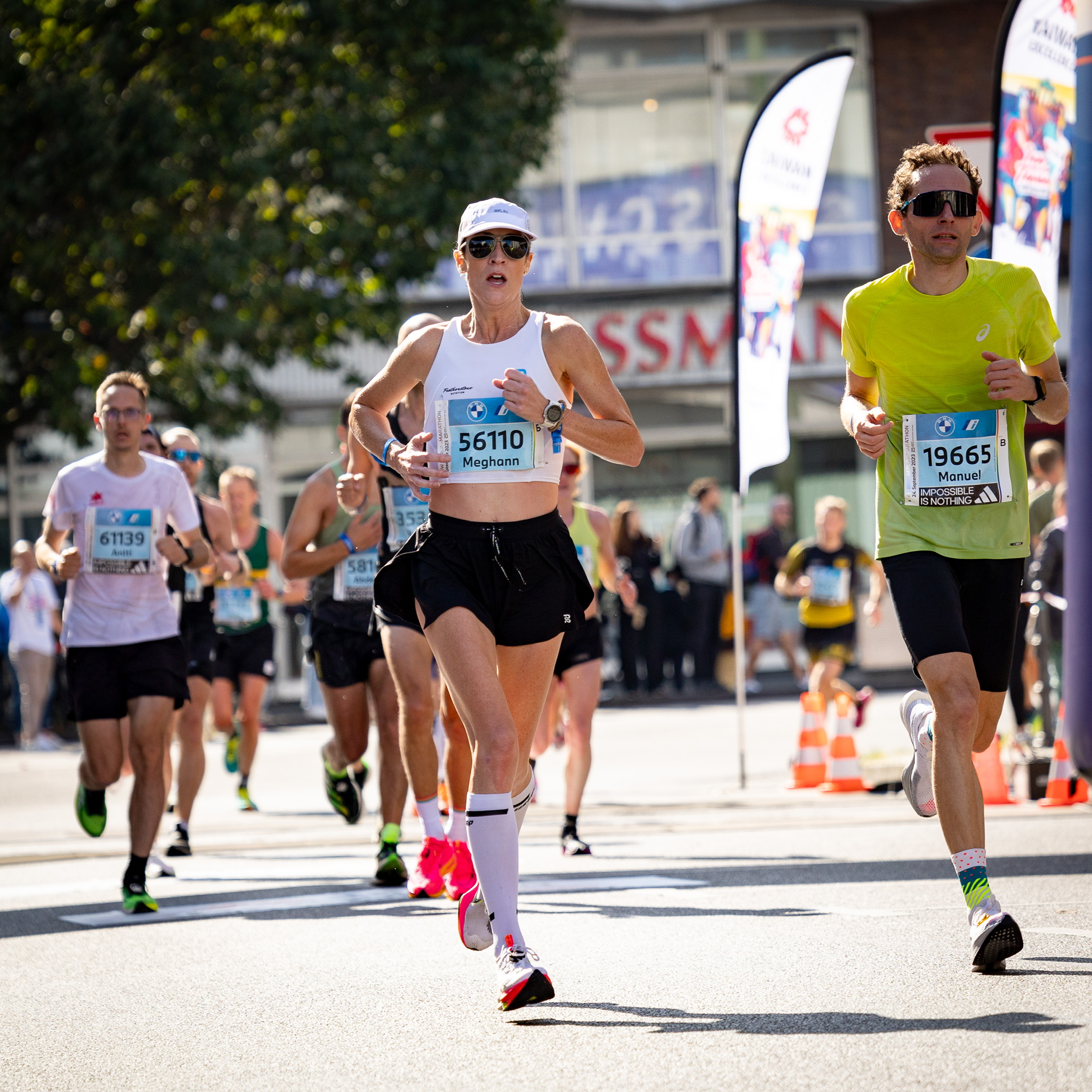
Post Race
The shock and awe of finishing a marathon and hitting your goal is pretty strong – and the blacking out of any discomfort while running said marathon is also very strong. As I was walking through the finish area to get my medal, I realized two things: I had a HUGE blister under my pinky toe & I was so unbelievably thirsty. I stopped at the first recovery table and drank 4 cups of water and started to feel significantly better.
The cruelest part of the Berlin Marathon may just be that we have stop, bend over, sit down, and remove the timing chip from the laces of your shoe. The timing chip is not in the bib, but a plastic clip you lace into your shoe.
After I gave back my chip, I took off for the Tracksmith pop-up to get my poster and see if I could be the first female to arrive and get the coveted trophy. <I apparently was not the first female as I did not get a trophy.>
Shortly after returning to my hotel, I got a text asking if I’d like to come meet Eliud Kipchoge in an hour. Unclear whether this moment increased my heart rate more than that final 2k sprint at the end of the race. I just finished the freaking Berlin Marathon with a PR under 2:50 and now I get to meet Eliud. What a day.
Meeting Eliud was nothing short of everything I could imagine. Humble. Kind. Compassionate. Confident. When the group told him my finish time, he was genuinely excited for me and impressed at this marathon time amidst all the other commitments in my life. He is definitely everything people say and more.
From here, we headed out for a celebration dinner and then to the Berlin Marathon afterparty. I was told this was a do not miss – and I have to extend this to anyone who plans to run Berlin. You do not want to miss this afterparty. It was quite possibly the most epic afterparty in the history of afterparties. <and I haven’t shied away from many parties in my life>

The End
If you’re still with me, you deserve a medal here. But to sum this all up, the entire Berlin Marathon weekend was one of the top weekends on my life. And, I am unbelievably grateful to Abbott for sponsoring me in my quest to earn my Abbott World Major Marathons 6 stars. And for taking care of me when I am by myself in a foreign country <my mom very much thanks you as well.>
Next up is spectating the Chicago Marathon, fun running the New York City Marathon, and then onto Toyko and London in the Spring.
Thank you all from the bottom of my heart for being a part of this journey. Practicing my nutrition and hydration strategies on myself is cool and all, but helping you all nail your own personal nutrition plans for life and training is where I really feel the most joy in life. So, stay curious – keep fueling like the boss you are – and hang around here for all the new tips, tricks and fun.

If you need help with your carb load or race day plan, I can create a Customized Carb Load Plan or Race Day Fuel & Hydration Plan for you!
Can the type of food you eat "turn off" your aerobic system?
What is the aerobic system?
The definition of the aerobic system is the “combustion of carbohydrates and fats in the presence of oxygen”. The aerobic system is how we produce energy from fuel for endurance efforts, which is necessary for all runners, no matter the pace. If we continually fuel, this system can keep functioning.
What fuels the aerobic system?
The aerobic system can be fueled by carbohydrates and/or fat. It is possible to utilize protein; however, the body spares protein breakdown at all costs. We know that when both carbohydrates and fat are available, turning carbohydrates into energy is more efficient and carbs are utilized more during high intensity exercise. If carbohydrates are not present, fat will be utilized as the fuel source.
If I don't eat enough carbohydrates, can't I just use fat as fuel?
Fat is utilized more at low-moderate intensities, but in the absence of carbohydrates, your body will indeed utilize more fat for energy. However, we also know that when glycogen is depleted, our bodies start to break down protein – and as endurance athletes, we want to build and support lean muscle, not break it down. Also, we mentioned above that the process of turning carbohydrates into energy is more efficient than fat <you will be able to give your body energy faster with carbs as the fuel source>, and carbohydrates are important for contractile function in the muscle.
If I eat junk food, will it turn off my aerobic system?
Absolutely not. If you have fuel to use <aka carbs, fat, protein> and you are working at a higher intensity <aka high aerobic activity>, your aerobic system will produce energy from said fuel, no matter where they came from. Your energy systems do not know the difference between fuel from oatmeal, pop tarts, graham crackers, gels, or a banana.
So, how do I fuel my aerobic system for performance?
A balanced diet with adequate protein at all meals, healthy fats, and matching carb intake for your current activity level is the best way to fuel your aerobic system. In our daily lives, for the most part, meals and snacks can consist of complex carbohydrates <giving you carbohydrates, fiber, and other nutrients>, lean protein, healthy fat, and color.
Being more strategic before and during your exercise with quick fuel sources that are easy to digest will help you get the energy you need the fastest, without upsetting your GI tract. Easily digestible carb sources: bagel, English muffin, toast, grahams, banana, etc.
PMID: 11547894, 14964437, 14641041, 24149296
Disclaimer: The content in our blog articles provides generalized nutrition guidance. The information above may not apply to everyone. For personalized recommendations, please reach out to your sports dietitian. Individuals who may chose to implement nutrition changes agree that Featherstone Nutrition is not responsible for any injury, damage or loss related to those changes or participation.
Carbohydrate Needs & Low HR Training
Do I need carbohydrates when I train at a low heart rate?
The short answer is, yes, you do need carbohydrates, even when you are training at a low heart rate.
Carbohydrates are the preferred fuel source for our muscles. We can ingest carbohydrates for quick energy & use glycogen <carbohydrate stores> to fuel our runs. Of note, our bodies can turn glycogen into fuel faster than turning fat stores into fuel.
We have lots of research to show that during an aerobic activity <like running> our bodies are burning a combination of fat & carbohydrates. At a lower heart rate, our bodies utilize less carbohydrates than at a high heart rate. But even at a lower heart rate <around 65% VO2 max>, our bodies will use about 50% fat and 50% carbohydrates. (See the graph below)
As mileage and duration of an endurance activity increase, we know that our carbohydrate needs also increase. This means fueling with carbs on a daily basis, pre-run, intra-run and post run. Any endurance activity requires carbohydrates to perform our best.
So, while we use less carbohydrates at a lower HR, we are still using a decent amount of carbs as fuel. For an easy, low HR run over 1 hour, maybe we can stretch our fuel a little bit more <think taking a gel every 30-40 min instead of every 25-30 min>, but when you are in a longer endurance feat and want to feel your best, it is still recommended to fuel early and often so we don’t hit the wall.
What we know about the positive effects that carbohydrates have on running:
Carbohydrates are the preferred fuel source for our muscles.
Pre-run carbohydrate intake improves endurance performance.
Carbohydrate availability is essential for muscle contractile function.
Carbohydrate consumption post-exercise aids in muscle recovery.
Carbohydrate storage in our muscles <glycogen> improves endurance performance.
MORE MILES = MORE CARBS
Takeaway...
While it is possible to run without consuming many carbs, we have listed many reasons why it is beneficial to support your training with adequate carbohydrates, even if you are training at a low HR. The total amount of daily and intra-run carbs might be a little lower than someone working at a higher intensity, but it will depend. It is very dependent on your training volume, duration, body size, etc. If you need help figuring it out, reach out for a consult.
PMID: 33198277, 8214047
Disclaimer: The content in our blog articles provides generalized nutrition guidance. The information above may not apply to everyone. For personalized recommendations, please reach out to your sports dietitian. Individuals who may chose to implement nutrition changes agree that Featherstone Nutrition is not responsible for any injury, damage or loss related to those changes or participation.
Hydration on Race Day
There are many options when it comes to race day hydration: Should you bring your own handheld or drink what is on course? How often and how much to drink? Should you drink water or electrolyte drinks? Let’s dive into what you need to be thinking about for your race day hydration.
Go into your race hydrated
Even before race day, we need to be smart with our hydration, to make sure that we are going into the race well hydrated. This means hydrating the day & night before and the morning of the race.
The night before: Drink 12-16 oz of an electrolyte drink. If your race is over 1.5 hours, and you’ve been carb loading, the extra water you drink with your carb load will help, too.
The morning of: Drink 12-16 oz of an electrolyte drink (or a cup of coffee/tea + electrolyte drink). Stop drinking 1 hour before your race to decrease the need for bathroom stops (sips are ok if needed).
Should I carry a handheld water bottle or drink what is provided on course?
This is a personal decision that only you can make. Think about what will make you more comfortable on race day: not carrying a handheld or bringing your own drink so you know exactly what you are getting.
Pros of carrying your own bottle: not battling at the crowded aid stations, running better tangents without weaving for tables, and drinking the electrolyte drink you trained with each week
Cons of carrying your own bottle: something to hold in your hand, may throw off your natural gait & arm swing without enough practice, and fluid is provided on course
This decision can get tricky, especially if your fluid and electrolyte needs are high. Getting help from a sports dietitian to create a plan that works for your needs is a great option.
Should I drink water or an electrolyte drink on course?
If it’s a cool race day and you aren’t a very heavy/salty sweater, it’s possible that drinking water to thirst & with gels or chews can work for you, especially for shorter to half marathon distance.
If it’s warm or you are a heavy/salty sweater, you will need more electrolytes. You can consume electrolytes from one or a combination of: on course electrolyte drinks, electrolyte drink in your handheld, race fuel, and salt caps/tabs.
If you are planning on using an on course hydration drink, practice with it during your long runs, so you know you tolerate it. We don’t want to try anything new on race day!
How often should I drink during the race?
First, it depends on your individual needs & sweat rate. We need anywhere from 2 – 20 oz of fluid per hour in races over 60 minutes. That’s a wide range. And, we often aim to replace around 1/2 of our sweat losses during a race. We never want to drink back all our sweat losses during a race and we should never drink more than we lose via sweating while racing. <Of note: we never want to drink more than 25 oz fluid per hour as this increases our risk of a dangerous condition called hyponatremia.>
You also need to consider what/where you are drinking. If you are using what’s on course, make sure you look into where the aid stations will be. Many big races and marathons will have them at every mile (or close to it) but others may not.
Most race cups have about 3-4 oz, but how much you ingest will vary. If you stop or slow to a walk to drink, you may be able to drink all or most of it in. If you are running while drinking, it’s likely that you will only get 1-2 oz per cup.
If you are bringing a handheld water bottle, you will know exactly how much you are drinking.
Often, we train in weather that is very different from race day. Ideally, we use the sweat rate calculator to determine how much sweat we lose per hour in predicted race conditions and this can help guide our fluid strategy on race day.
Use your sweat rate data to determine how much fluid you will need, and then figure out how much and how often you need to drink.
Takeaway...
We all know that hydration needs are very individualized, and there are many choices to consider with hydration products and drinking methods. The best thing your can do is to have a plan. Use your sweat rate & sweat composition data to make your plan. If you need help, please reach out for a Last Minute Crunch Time Session with Meghann or a Customized Race Day Fuel & Hydration Plan.
Example:
Ben is running a marathon, estimated finish time is 3:45, and his sweat rate at a similar temperature is 26 oz/hr.
3:45 x 26 oz/hr = 97.5 oz estimated total sweat loss
Ben will aim to drink 1/2 of his sweat losses during the race (for races over 60 min). Ben wants to drink about ~50 oz during the marathon. He is going to drink what’s on course, and he knows there are aid stations every 2 miles.
Ben’s plan: Ben is going to alternate water + the electrolyte drink on course because the temperature is mild, and his gels have sodium. He is going to grab a cup at each aid station.
12 stations x 4 oz per cup = 48 oz.
Ben also carb-loaded like a beast, so he knows he has extra fluid on board in case he misses a stop, spills some of his drinks or the temp increases a bit during the race.
Need help figuring out your race day hydration plan? Meghann can help with a Customized Race Day Fuel & Hydration Plan or a Last Minute Crunch Time Session.
Disclaimer: The content in our blog articles provides generalized nutrition guidance. The information above may not apply to everyone. For personalized recommendations, please reach out to your sports dietitian. Individuals who may chose to implement nutrition changes agree that Featherstone Nutrition is not responsible for any injury, damage or loss related to those changes or participation.
Running & GI Issues
Many of us have experienced GI <gastrointestinal> issues on long runs or race day. GI issues can be in the form of nausea, sloshy stomach, vomiting, cramping, or diarrhea. Let’s take a look at what can cause it & what we can do to prevent it.
Dehydration
Often, dehydration is the cause of GI distress during long runs or on race day. When you are dehydrated, there is less blood flow to your GI tract, and thus, your body cannot digest and absorb nutrition & fluid as efficiently.
To avoid GI distress caused by dehydration, make sure you hydrate well the entire day before a long run or during your carb load leading up to your race. Hydrate the morning of the run with electrolytes and take in enough fluid & sodium during your run. If you are a heavy/salty sweater or it is warmer outside than you prefer, consider hyperhydrating the night before a long run or race. <To read more on hydration needs, check out our Hydration page>.
Food
Some of us have stomachs of steel and can eat whatever we want leading up to a long run or race. But, for those of us who don’t, too much ‘roughage’ the day before leaves a little too much ‘behind’ to cause problems the next day during the run. Take a look at what we are eating the night before and the morning of your run/race. Focus on getting in simple carbs and limiting fat and fiber, which may cause GI distress. Those with sensitive stomachs may need to skip the salads and veggies the night before those long runs and races. Simple carbs include: white bread, pastas, rice, bagels and crackers, fruit juices, sports drinks, etc.
Liquid & Gel Concentration
If you dump too much sugar from gels and hydration drinks in your stomach at one time or you aren’t used to taking nutrition during your runs, it may cause GI distress. Be sure to mix your hydration drinks according to the directions so they aren’t too concentrated. And, train your gut to take gels during your long runs <use our calculator to determine your needs>. You may need to play around with different types of drinks and gels to find what works best for you.
Core Body Temperature
When your core body temperature increases, gastric emptying decreases, and so does the absorption of nutrition. Hydration is one of the keys to this – so make sure you are well-hydrated going into your run & stay on top of your hydration during the run. Try to stay as cool as you can – wear the right clothing, find some shade when possible, cool off in a sprinkler – whatever gets the job done.
RPE
As your rate of perceived exertion (RPE) increases, your ability to absorb nutrition and fluid decreases. This is a big reason why I always say ‘Fuel Early & Often’ – If we fuel early & often while we are feeling good before our RPE gets too high, we will have a little wiggle room at the end if we cannot tolerate fuel at that time. And during a race, we will have more fuel stored from our carb load to fall back on.
If you need help to figure out why you are experiencing GI issues during your runs, Meghann can help! Complete a coaching application for a Last Minute Crunch Time Session with Meghann.
Disclaimer: The content in our blog articles provides generalized nutrition guidance. The information above may not apply to everyone. For personalized recommendations, please reach out to your sports dietitian. Individuals who may chose to implement nutrition changes agree that Featherstone Nutrition is not responsible for any injury, damage or loss related to those changes or participation.
Your Hydration Questions... Answered!
You all send us the BEST questions! Here are some of your hydration questions… answered!
What can I do to feel well-hydrated without feeling bloated or having to pee mid-run?
To be well-hydrated, you need to first make sure that you are drinking enough fluid for your baseline needs + recouping losses from exercise. To calculate your baseline needs, take your weight in pounds and divide that by 2 – that is roughly how many ounces you need per day. For our bodies to rehydrate the most efficiently, don’t chug your water but drink evenly throughout the day. We also absorb water better with some electrolytes and carbs. Drinking water with meals or snacks that contain carbs & sodium works too. Apart from eating times, try a drink with fewer carbohydrates + electrolytes like 1/2-1 serving of Skratch Clear Hydration.
To avoid having to stop for a bathroom break during your run, finish drinking 1 hour before you leave for your run. If you are an early morning runner, you may need to adjust how much you drink in the AM or give your body a little more time to process the fluid before heading out. <Sometimes, this may not be completely hydration-related but can be hormone-related.>
If you discover that you are dehydrated on a run, is there a way to catch up?
There may be times that you find yourself dehydrated while out on a run. So what can we do to minimize dehydration while we are out there? Here are some scenarios and solutions:
You thought you were well-hydrated pre-run…but you actually are not: Take an electrolyte drink with you and drink throughout your run. You may need more than you would normally drink as you are starting off dehydrated. Stick to 20 oz/hr – only take more if you know your body can tolerate it.
You forgot your handheld: If this is a long run, go back and get it. If it’s a run around 60 minutes, you may be ok just hydrating after the run if you aren’t a heavy/salty sweater. Water stops/drinking fountains along the way might be enough during the cooler months, but during the summer, water won’t cut it.
It’s hotter than you expected/planned for: Find a water fountain along the way to fill up your water bottle. It’s a good idea to keep extra electrolyte packets on you so you can refill vs just drink water.
I get sick of the flavor of my hydration drink towards the end of the run. Is there anything that is completely unflavored?
First, you can try different electrolyte drinks – maybe switching up the flavor will work for you. If not, and you want completely unflavored, switch to water + salt caps or chews for when you need the sodium.
When I get hot on a run, I like to chug plain water, and it feels like it’s not enough. I alternate regular gels and gels with higher electrolytes. I’m a salty sweater. Do I need to carry electrolytes in my handheld?
Yes, you need more electrolytes. If you are chugging water without taking in electrolytes, are a heavy sweater, and went into the run dehydrated, you are at risk for a condition called hyponatremia. Switching to an electrolyte drink is a good idea, especially as a heavy/salty sweater – because you need it! Also, try to take sips of your fluids instead of chugging while you are out on your run. Save your water chugging for post-run + a salty snack.
I have a hard time taking electrolytes while running. If I drink water, I feel fine. If I drink electrolytes I have Bubble Guts. Help!
If this is how you feel on all runs, including easy runs, you may just need more practice taking electrolyte drinks on runs. Your stomach might not be used to the carbs in the drinks. Electrolytes & carbohydrates in our fluids actually help speed up absorption. Try a new electrolyte drink until you find one that works. Or, change to water + a higher sodium gel or salt tab. You can also look at the combo of your gels + sports drink – if it is a significant increase in total carbs – your body may need a slower increase.
Does intensity of the workout change hydration? (75 min workout vs. 90 min EZ)
Yes, we sweat more during a workout, as we are working at a greater intensity, and our hydration needs will change. During a 90 min easy run, we want to take an electrolyte drink with us and sip on it throughout the run. During a workout, we sip on our drink during warm-up, in between hard efforts, and during the cool-down, but it won’t be as consistent as during an easy run. We can make up for our losses after the workout.
Disclaimer: The content in our blog articles provides generalized nutrition guidance. The information above may not apply to everyone. For personalized recommendations, please reach out to your sports dietitian. Individuals who may chose to implement nutrition changes agree that Featherstone Nutrition is not responsible for any injury, damage or loss related to those changes or participation.
How to: Hyperhydrate
If you’ve been following me for awhile, you know that I talk about hyperhydrating often, especially in the summer or before races. Let’s dive deeper into why we do this, who needs to do it & how we do it.
What is hyperhydrating?
Hyperhydrating is intentionally consuming extra fluid & sodium the night before a long run, race or other long, hard effort. The purpose of hyperhyrating is to have extra fluid & sodium on board prior to your run, to minimize dehydration for people who are heavy/salty sweaters.
Should I hyperhydrate?
Hyperhydrating might benefit you if you are:
- A heavy sweater (>1 L/hr)
- A salty sweater (>1000mg sodium/L)
If you don’t know if you are a heavy or salty sweater, try our sweat rate calculator and/or our favorite gadget, the hdrop wearable hydration monitor. You can also take a guess if you are a heavy/salty sweater if you have any or all of the following symptoms: large amounts of salt on your clothes after your runs, feel much worse running in the heat, GI issues on long runs or in the heat, muscle cramps, sweat that stings your eyes, headaches or dizziness or crave salty foods after runs.
How do I hyperhydrate?
With food: The night before your long run, race, hard/long effort, aim to consume roughly 1500-2000mg sodium + 16-32 oz of water (this is in addition to your baseline fluid needs!) See the graphics below for examples.

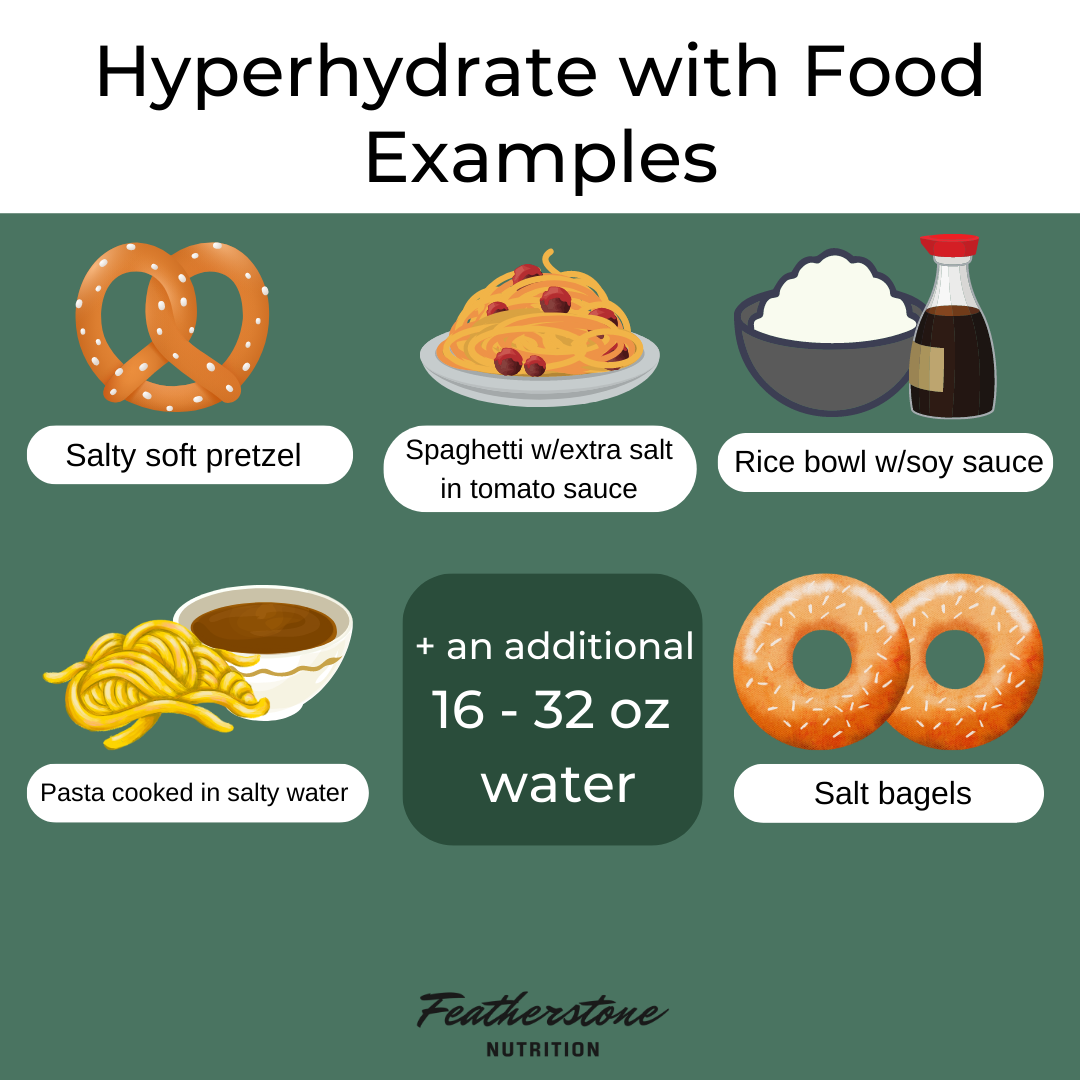
With a high sodium hydration products: High sodium drinks are an easy & convenient way to hyperhydrate. Some examples of how to hyperhydrate with high sodium drinks are: 1-2 LMNTs, 3 scoops of Skratch Hydration Everyday Drink Mix or a Mortal Hydration, the day before your big run.
Hydration is highly individualized and can be tricky to figure out. If you need help, we offer a Customized Race Fuel & Hydration Plan or complete an application for a Last Minute Crunch Time Session with Meghann.
Disclaimer: The content in our blog articles provides generalized nutrition guidance. The information above may not apply to everyone. For personalized recommendations, please reach out to your sports dietitian. Individuals who may chose to implement nutrition changes agree that Featherstone Nutrition is not responsible for any injury, damage or loss related to those changes or participation.
How to Fuel to Feel Better During Summer Running
We’ve all had some rough runs in the summertime – whether you bonk, can’t hold your paces or feel awful for the day post-run. We cannot control the heat, humidity or dew point, but we can control the fluid, electrolytes and nutrition that we put into our bodies. Let’s discuss what we can do to support our bodies and feel better during summer running. (Note: Even when we do everything we can with hydration and nutrition, you may still need to adjust your paces or training plan due to the heat & humidity!)
What to do daily:
Hydrate
Stay on top of your hydration. You need to replace your losses from your runs/workouts + your baseline needs. This should be done before-during-after your run, while continuing to hydrate during the rest of the day.
Fuel
Yes, you need to surround your runs & workouts with solid nutrition, but please don’t forget solid daily nutrition. Often, the heat can decrease our appetite. If this is the case, be sure to schedule meals & not rely on appetite alone. Three meals per day, snacks when you need them, nail that protein, eat carbs.
What to do before your run:
Hydrate
Drink 8-16 oz of a sports drink 1-2 hours before your run to go into your run well-hydrated.
Fuel
Give your body the fuel it needs before your run. For runs <60 minutes, consume 25-30g carb before your run. For runs >60 minutes, increase your carb amount to 50-90+g carb (your weight in pounds divided by 2 equals the minimum grams of carbs you need). Add a little protein or fat with your carbs if you’d like.
What to do during your run:
Hydrate
Drink 10-24oz fluid per hour during your run. How much you drink will depend on your sweat rate. To calculate your sweat rate & learn more about how much fluid you need , check out our sweat rate calculator. Make sure that you are taking in enough electrolytes. Sweat composition is the amount of electrolytes lost in sweat. The more we sweat, the more electrolytes we lose and thus, need to replace. If you are not sure what your sweat composition is, a good place to start is a sports drink with moderate electrolytes (like Skratch Sport Hydration). If you are a heavy or salty sweater, you may need more electrolytes.
Fuel
For runs <60 minutes, you are probably ok without fuel during your run. If you feel like you need some extra energy – take a gel or some chews! For runs >60 minutes, you need 25-30g carb every 25-30min (about 60g carb per hour and up to 90g per hour for more seasoned runners & elite athletes). Don’t skimp on your fuel early in your run – as your heart rate and RPE increase later in your run, your tolerance for fuel may decrease.
After your run:
Hydrate
Rehydrate with fluid + electrolytes immediately post-run and for the rest of your day. Good options for replenishment are Skratch Sport Hydration, Liquid IV or your favorite sports drink. You can also replace losses with higher sodium food + water.
Fuel
Refueling your body will help with recovery and replenishment of glycogen stores. This will help you to feel better for the remainder of the day and ready for you next run or workout. Aim for 20-40g protein + 50g+ carbs within 60 minutes of your run. After long runs and workouts, it is preferable to consume all your protein + at least some carbs within 30 minutes and then the rest of your carbs within the next 60 minutes. Good options are refueling are Key Lime Pie Overnight Oats, EBTB Egg Sandwich, or High Protein Vegan Tacos(tip: you may need to add extra carbs to these recipes!)
Tip: If you struggle with lack of appetite after summer runs, try a shower shake (in your Featherstone Nutrition Blender Bottle) to get some nutrition in quickly and easily. Snacking on something salty like pretzels will also help to give you some electrolytes, increase your thirst and help with hydration.
Our hydration page has a lot of valuable hydration information and is a great place to start to dive into your hydration. If you need more help, we offer a Customized Fuel & Hydration Plan – please allow 14 business days to receive your plan (so order ahead of time!)


